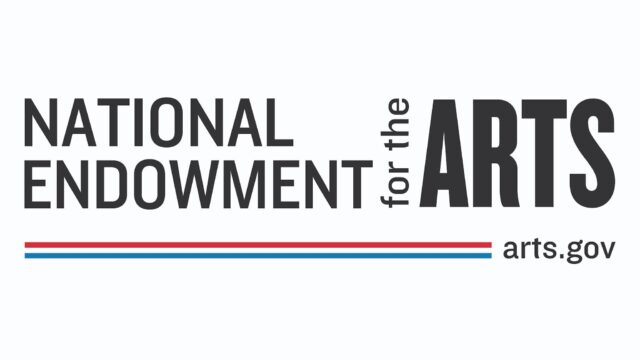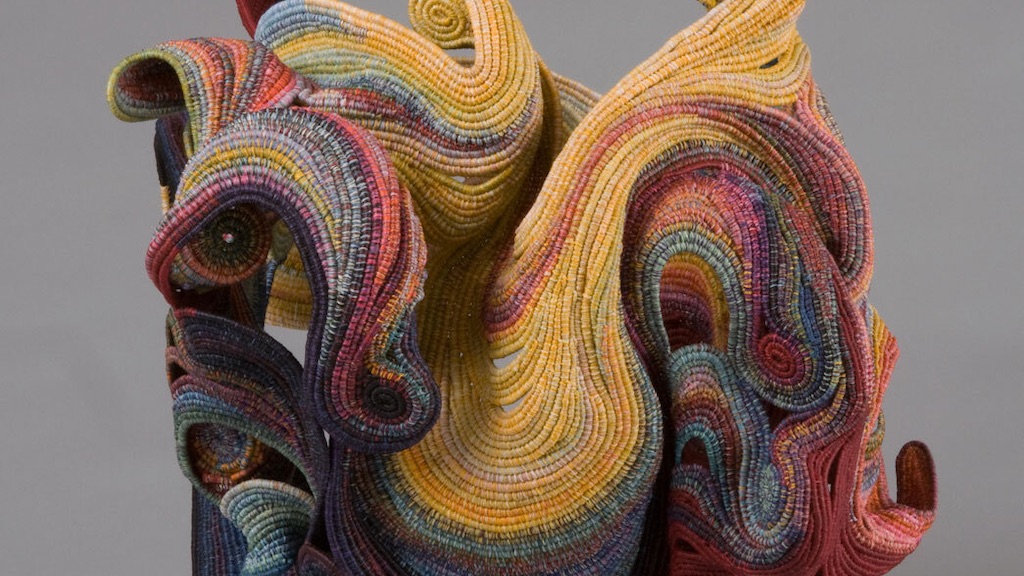Building the Essentials: Ferne Jacobs
4/2/2022 - 6/18/2022
The Craft in America Center is pleased to present the first ever retrospective of Los Angeles artist Ferne Jacobs. Since the 1960s, Ferne Jacobs has been at the forefront of the revolution in fiber art. She has pioneered ways to create a new category of sculpture. Transforming materials and pushing boundaries, she builds solid structures with coiled, twined, and knotted thread. This exhibition is the first to survey more than fifty years of Jacobs’ pivotal and timeless work through the present. Jacobs’ intimate drawings and collage diaries, which have never been publicly displayed before now, provide an additional lens into her vision, inspiration, and philosophical perspective.
Jacobs has lived and practiced in Echo Park for most of her life, yet she has rarely exhibited here in Los Angeles. She is among the leading artists who have shaped the national fiber movement that has flourished in California over the decades. This gathering of her work reflects Jacobs’ overall artistic evolution and highlights her unrelenting search for meaning in form, color, and process.While studying weaving around 1966 with artists Arline Fisch, Joan Austin, Mary Jane Leland, and Olga de Amaral, among others, Jacobs sought to learn other fiber techniques. From the moment that she learned to coil, she found a channel for expression that has become a lifelong career, extending beyond five decades thus far. Unlike the warp-restrictions of twining and other weaving processes, coiling offered unlimited potential for expansion and it allowed her to create hard forms.
Technically, Jacobs is recognized for her mastery of material and process. Reinventing and advancing traditional techniques used for basketry, and inventing countless other methods along the way, Jacobs has generated an entirely fresh format for sculptural art. Her acute sense of color melded with her poetic and intuitive approach are characteristic traits. Each piece begins with an idea, a dream, a story, or a picture in Jacobs’ mind, but it grows and takes on its own form over the months in which she shapes the artwork. Jacobs plays with duality in her work in terms of textures, contrast of color, interior and exterior, solids and voids. In terms of concept, she brings awareness to the conflicts of masculinity and femininity, spirituality and religion, and the destruction of the natural world. She seeks strength in softness and beauty in slowness. Each piece, with individual threads forming a cellular structure, is filled with her devoted focus and imbued with intense energy. Her pieces are meditations on the fiber of society and the nature of humanity in the modern world.
“The work is not about issues in the world per se, but of course, I am affected by them. The work has more to do with a mystery that I relate with when I am working, and just hoping that when each piece is complete, that it feels alive, that it has ‘breath’.”
Virtual Gallery
Click and drag, or use your arrow keys, to see a 360º view of the virtual space, including tags with object information and images.
Exhibition Catalog
Click on the catalog to view full screen and zoom options 
Printed copies of this catalog are available on Blurb for $24.
Process Videos
Watch Ferne Jacobs demonstrate knotting, twining, and coiling.
Image Gallery:
View the objects in the exhibition below and click on each image for additional information.
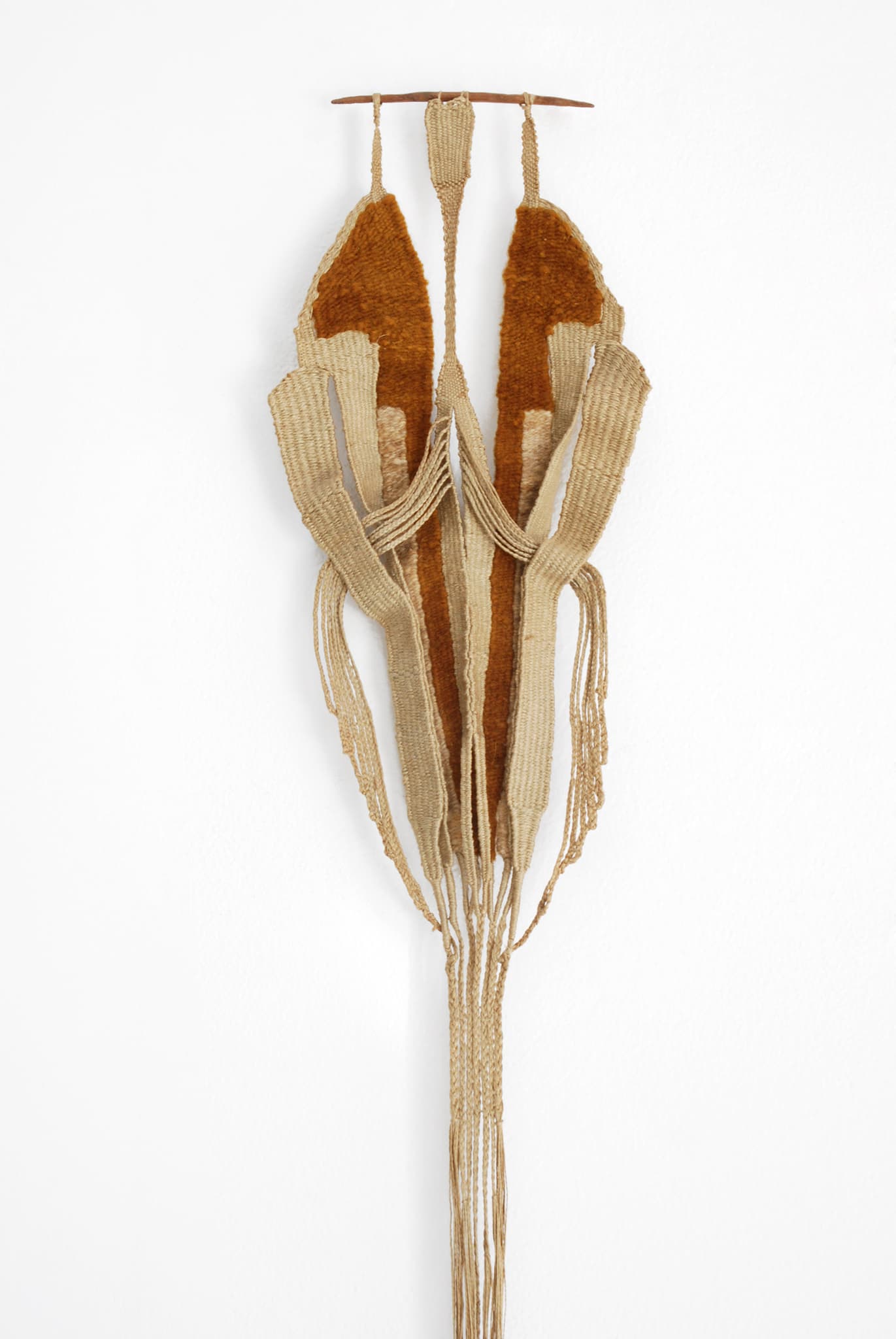
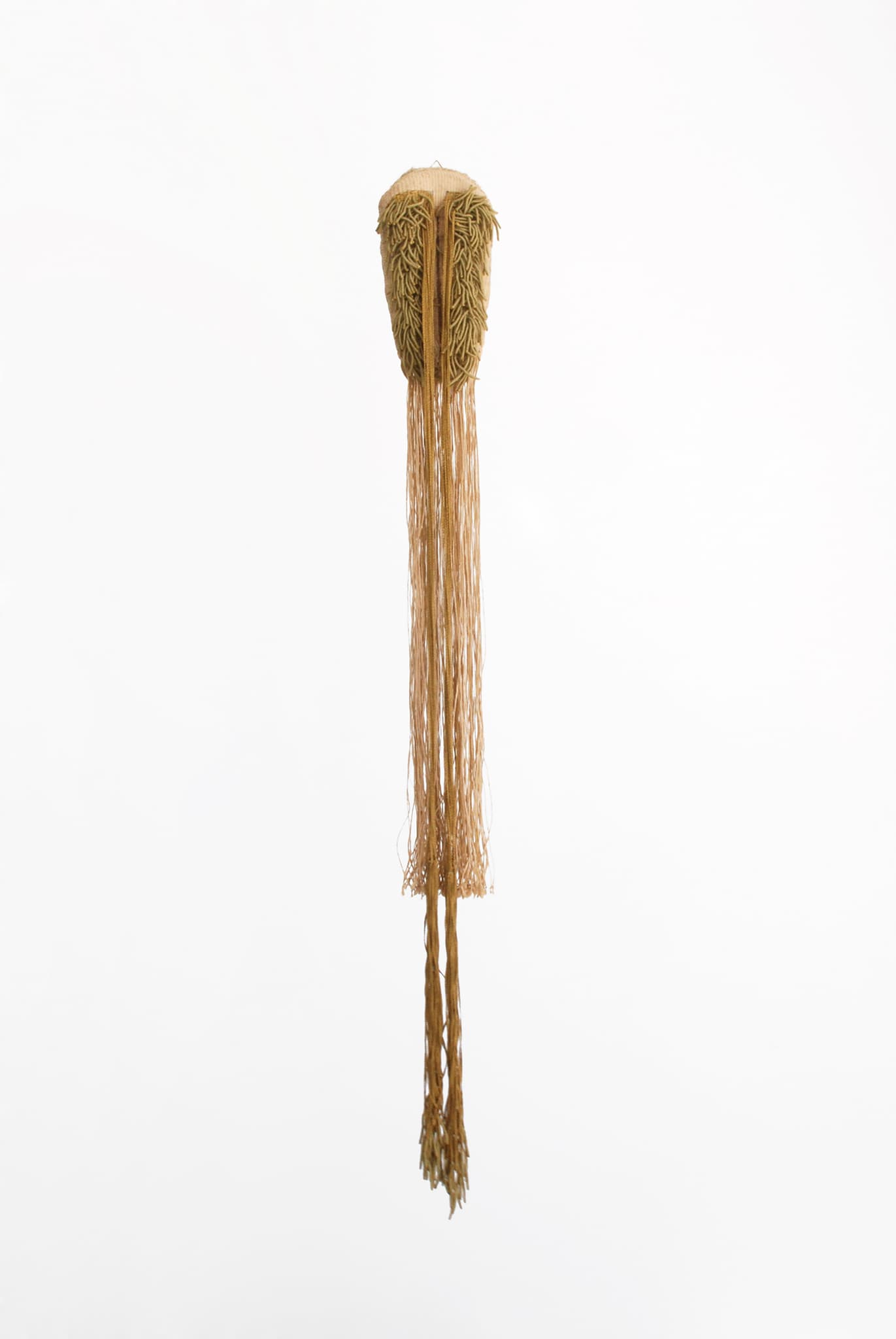
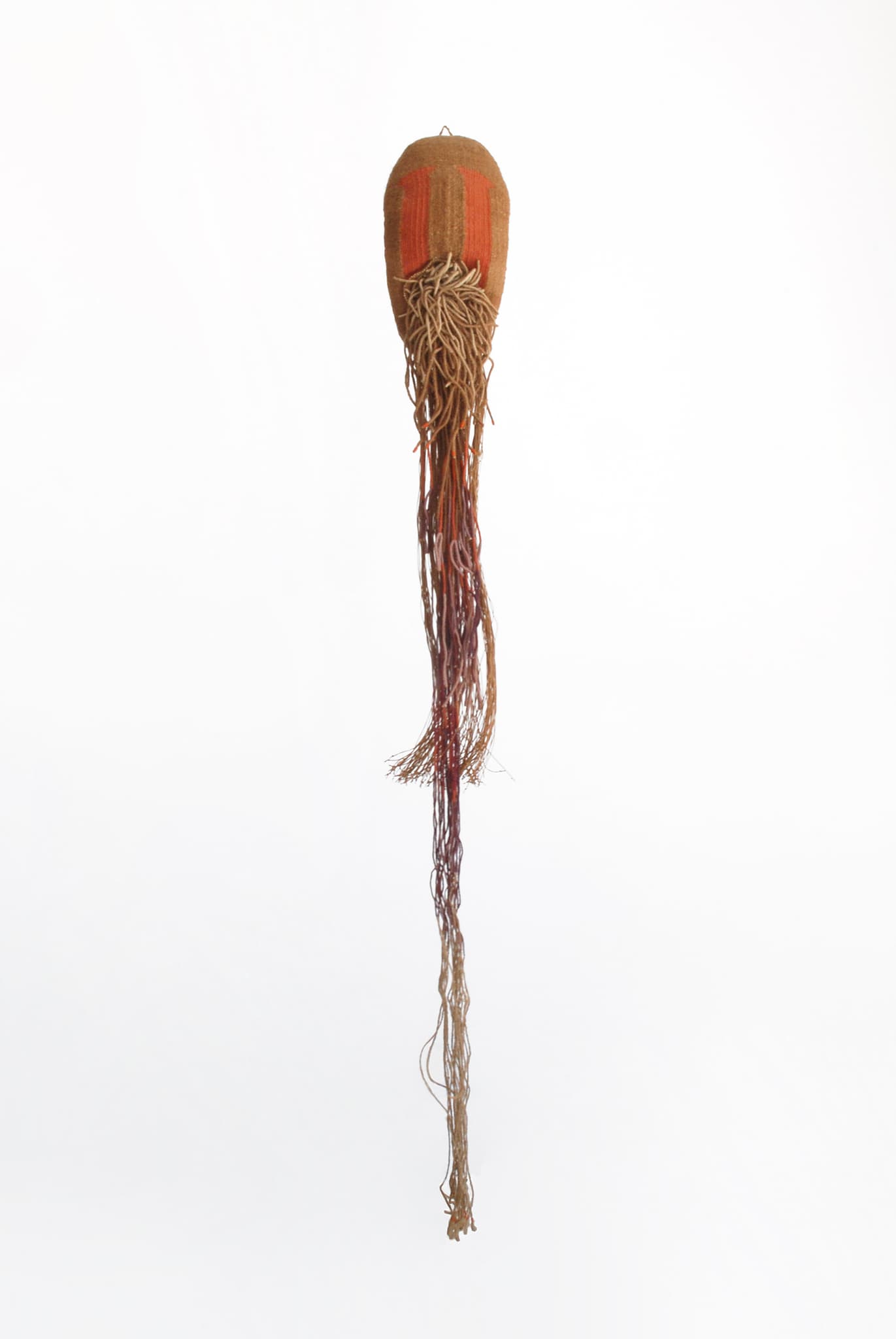
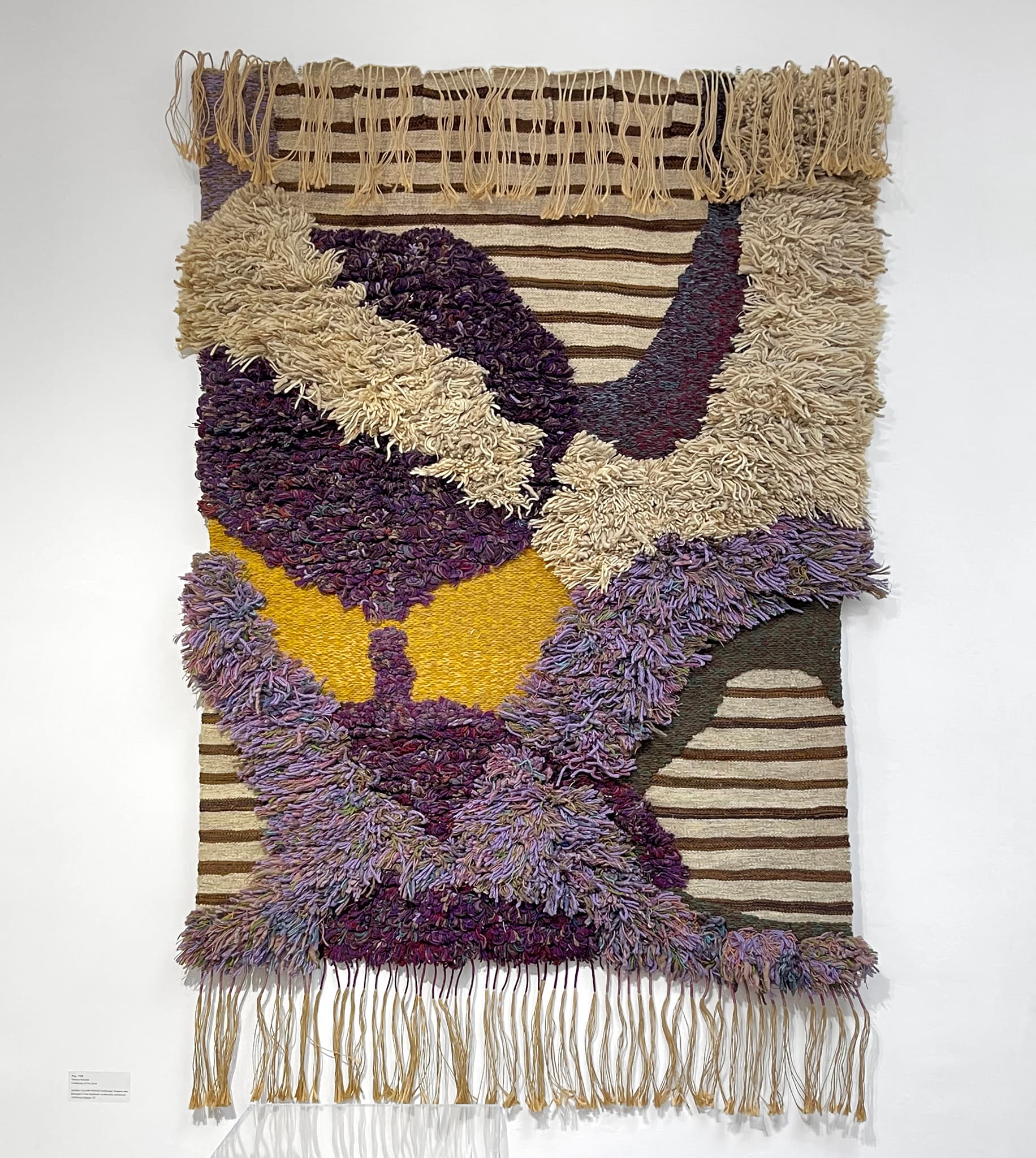
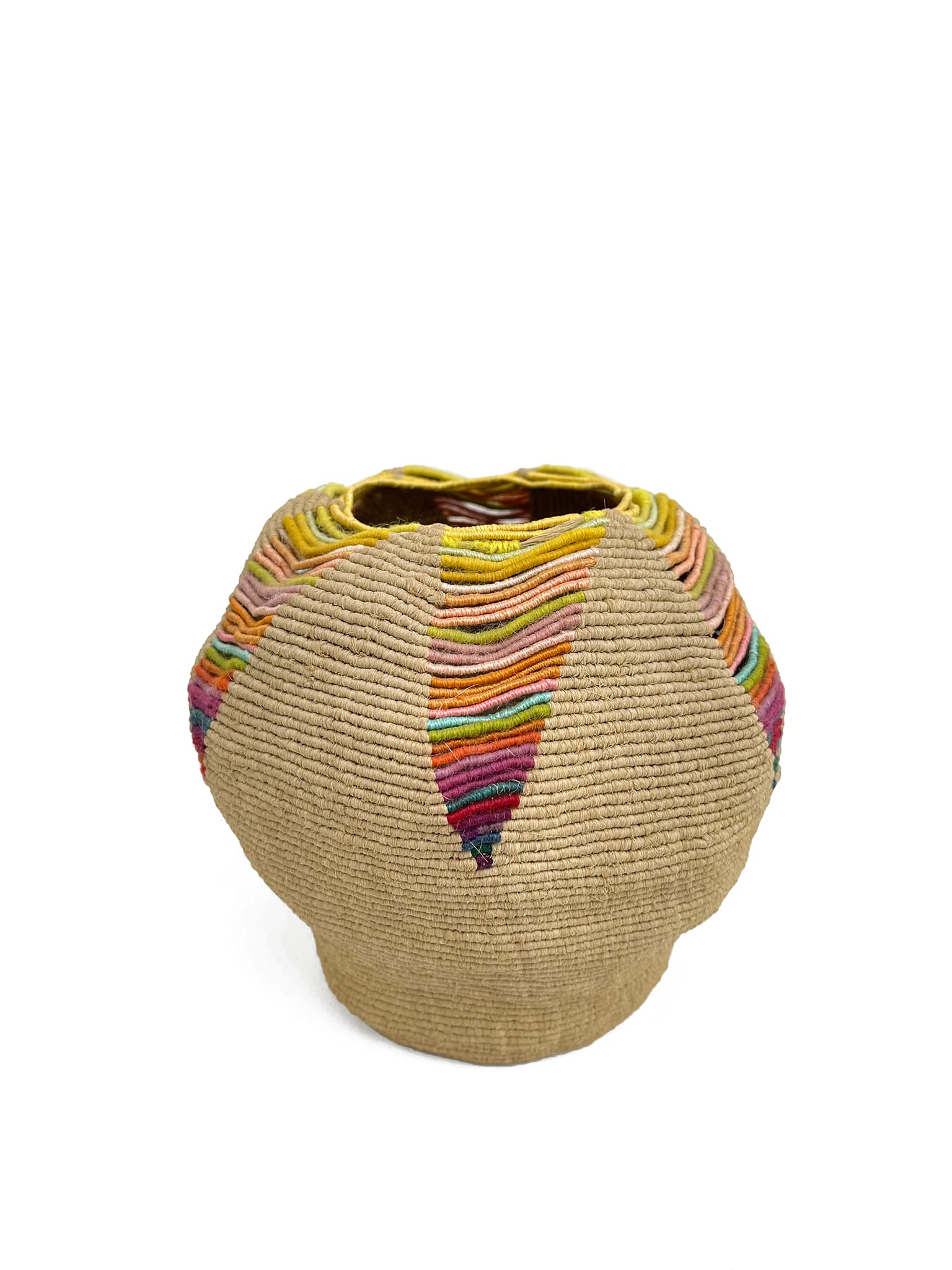
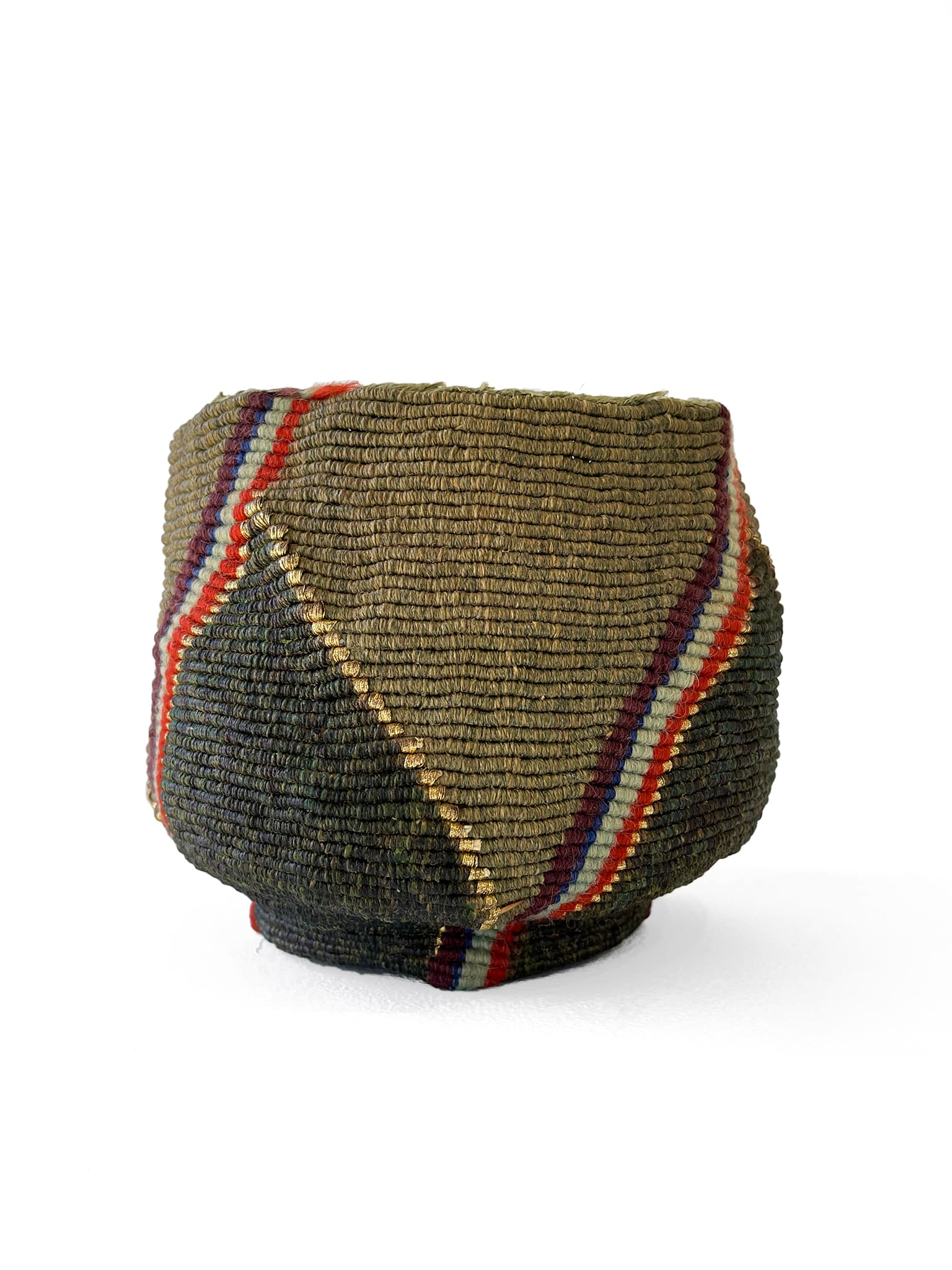
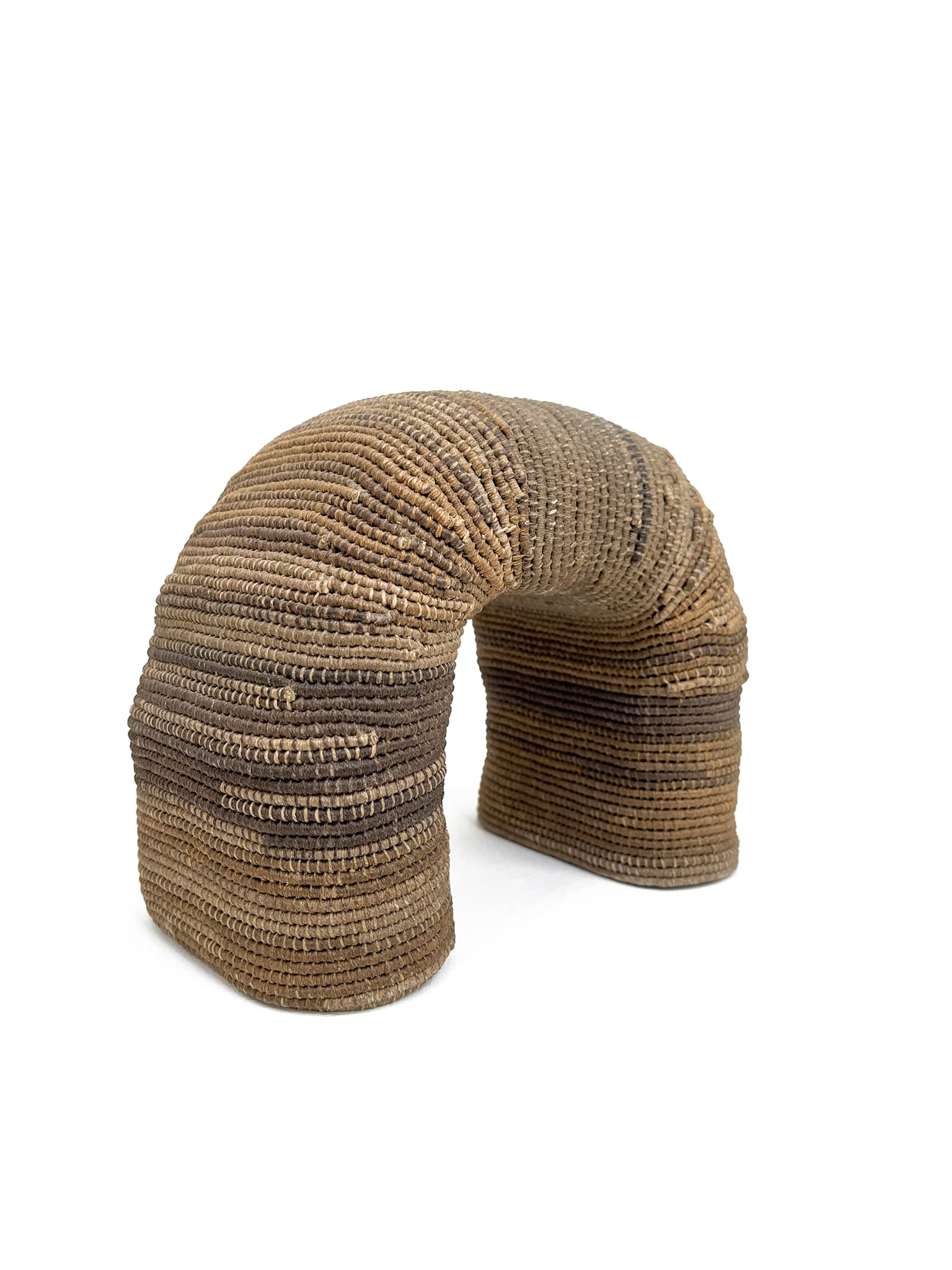
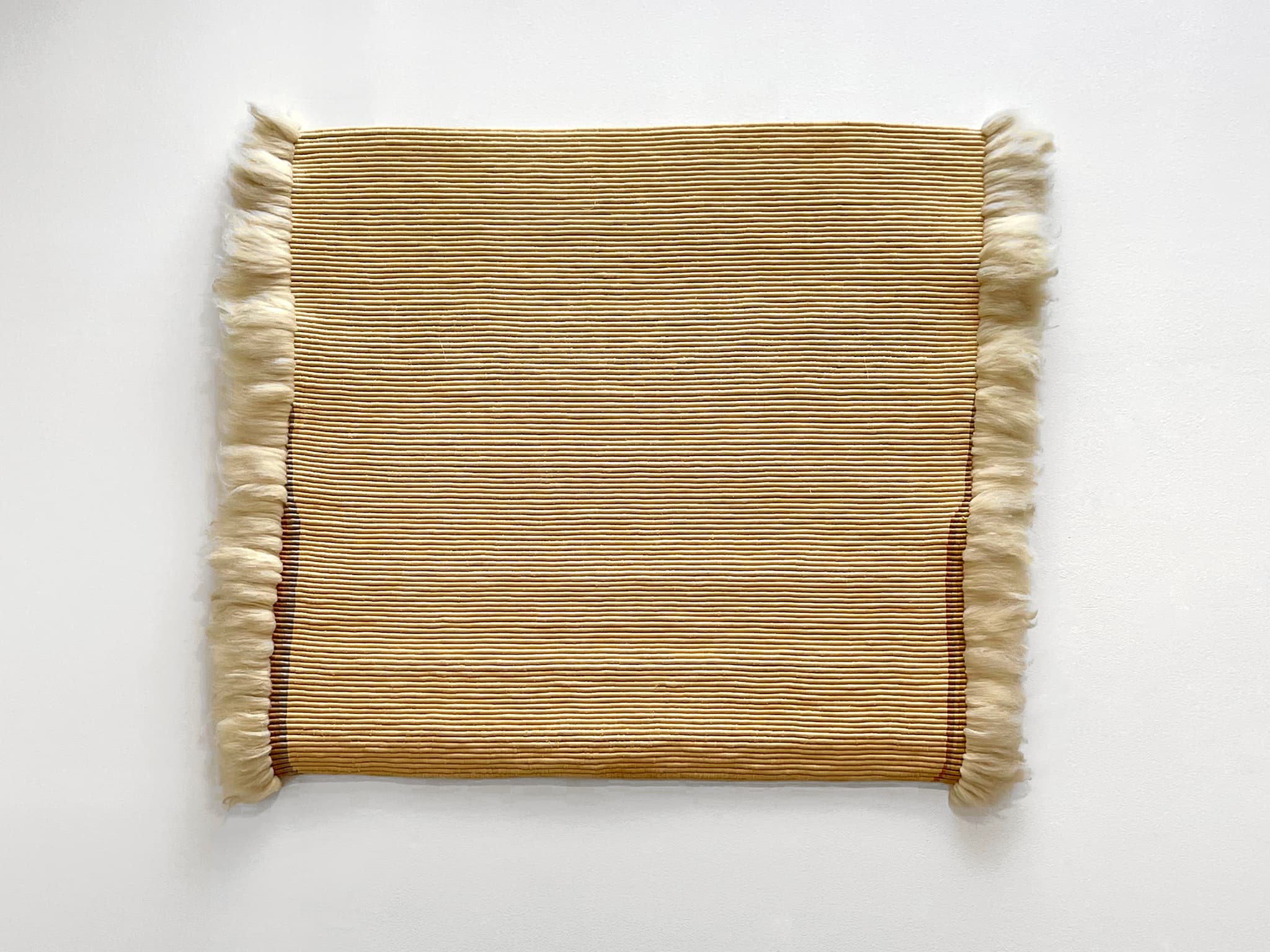
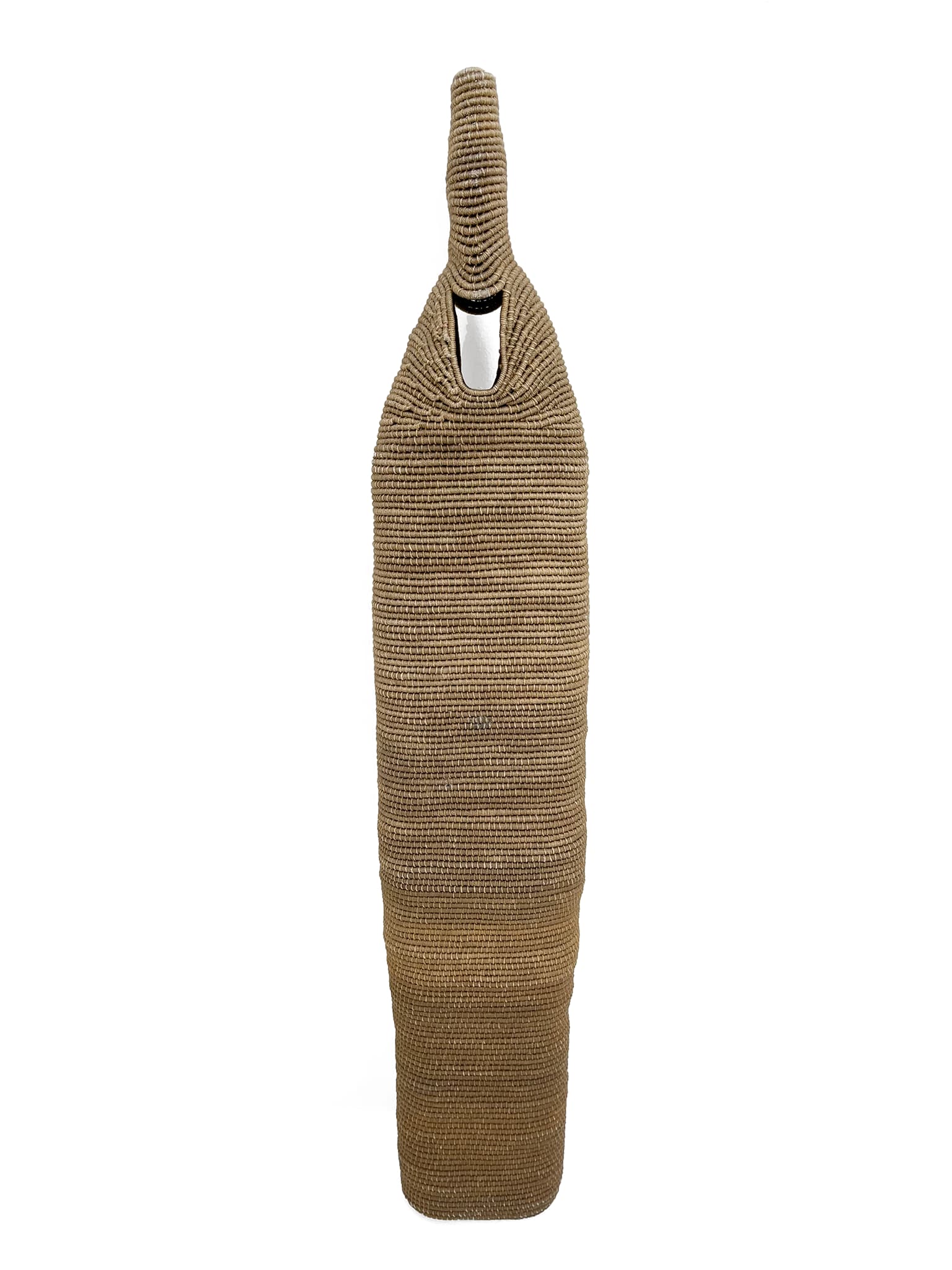
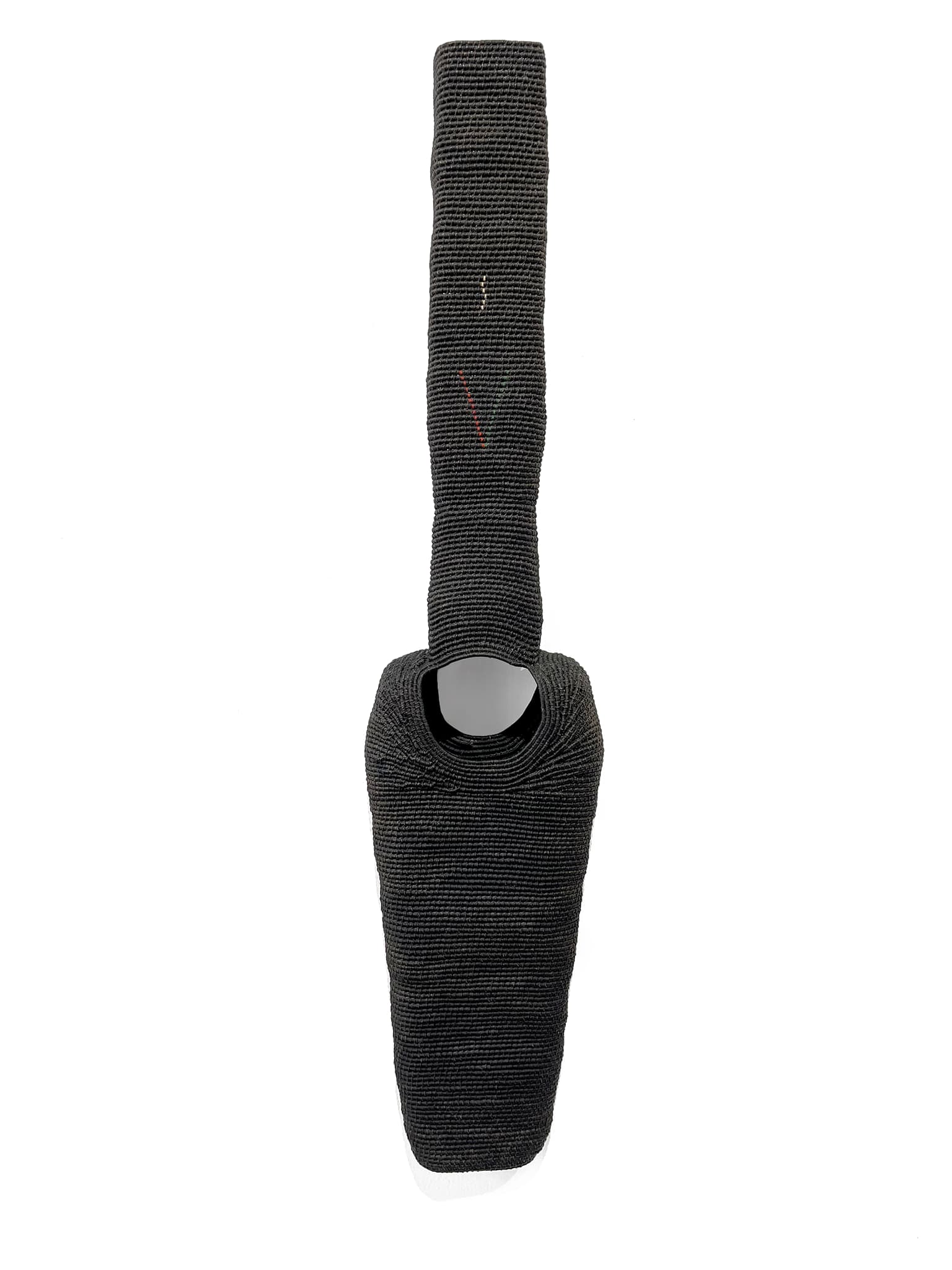
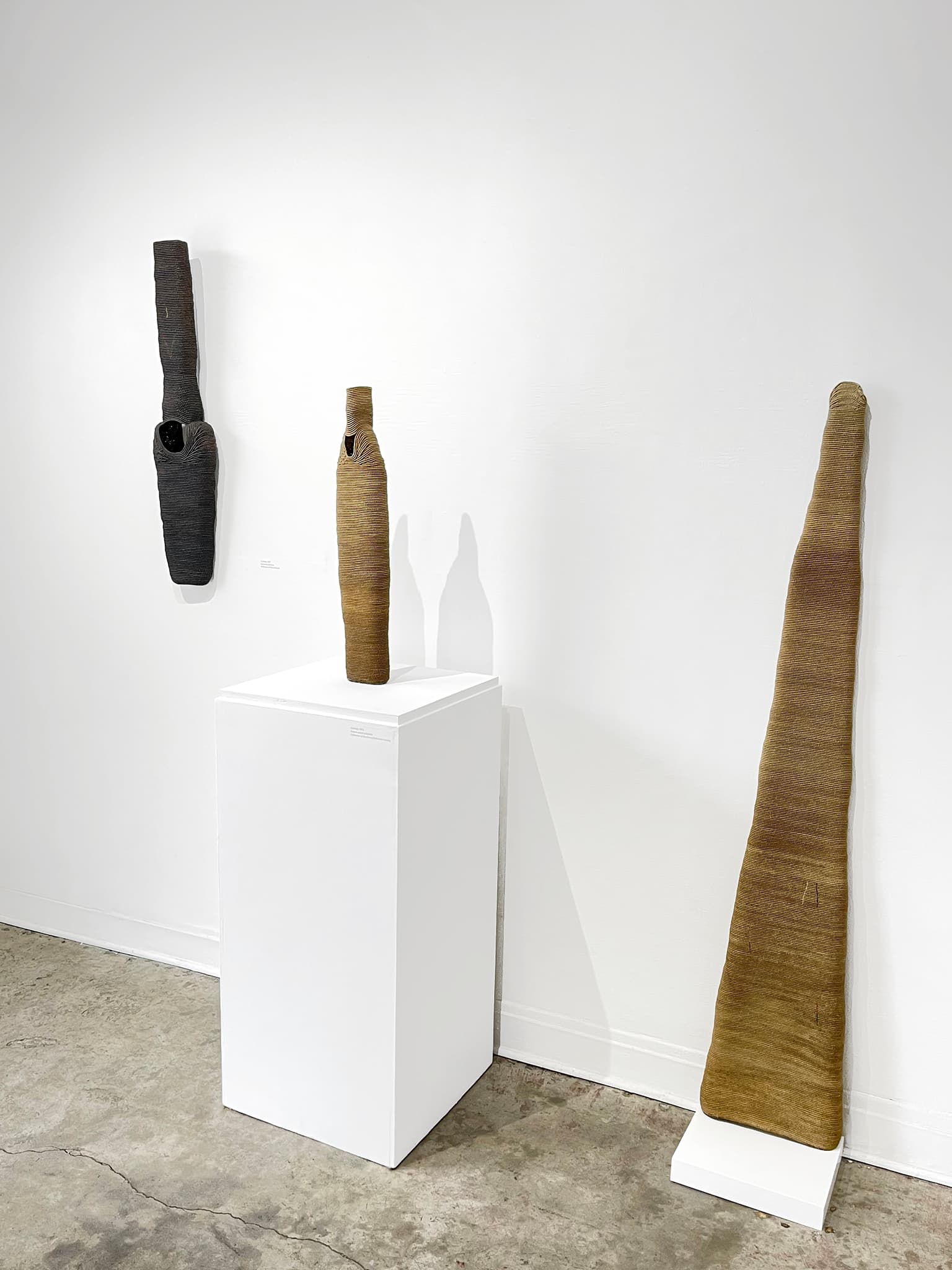
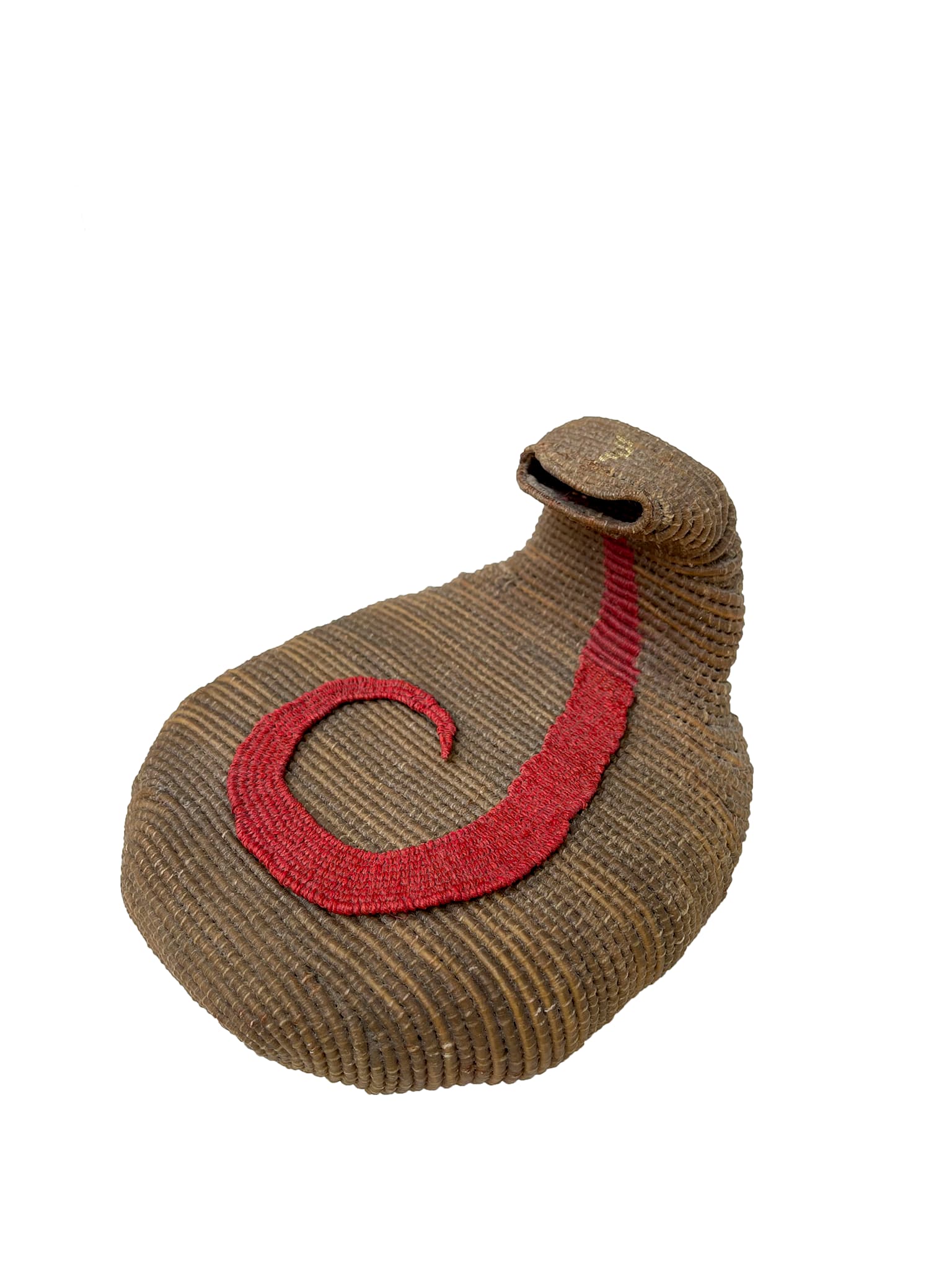
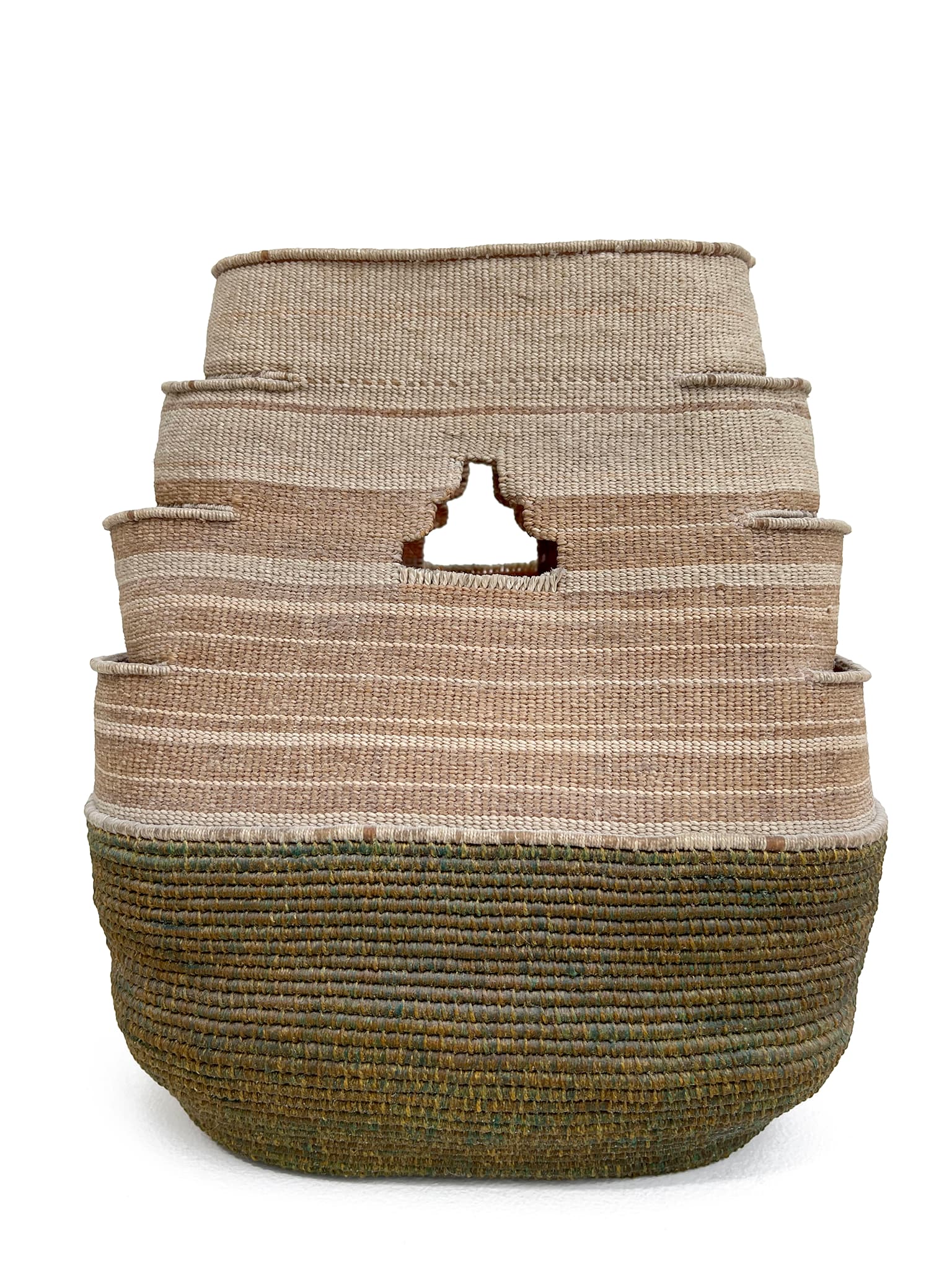
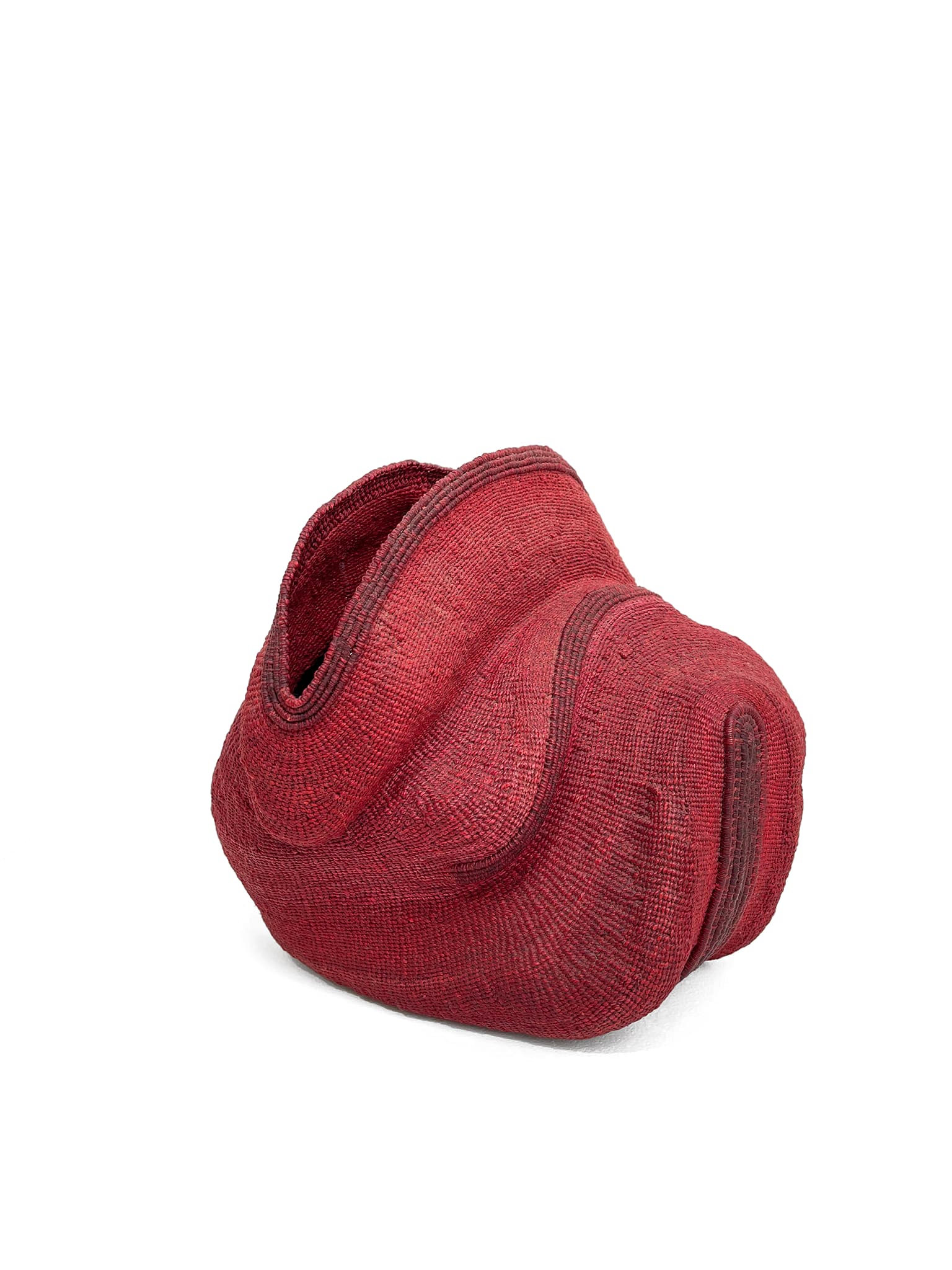
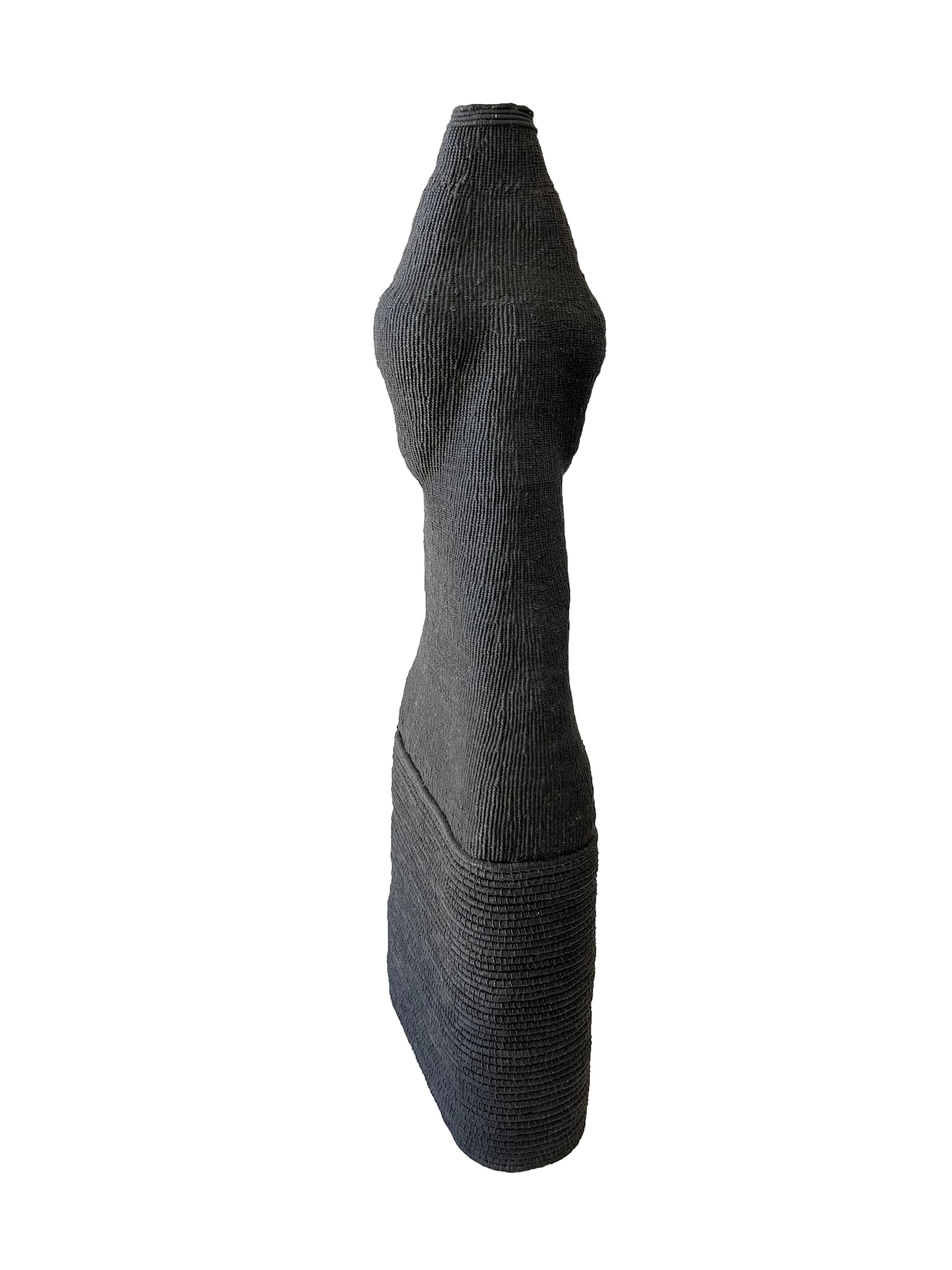
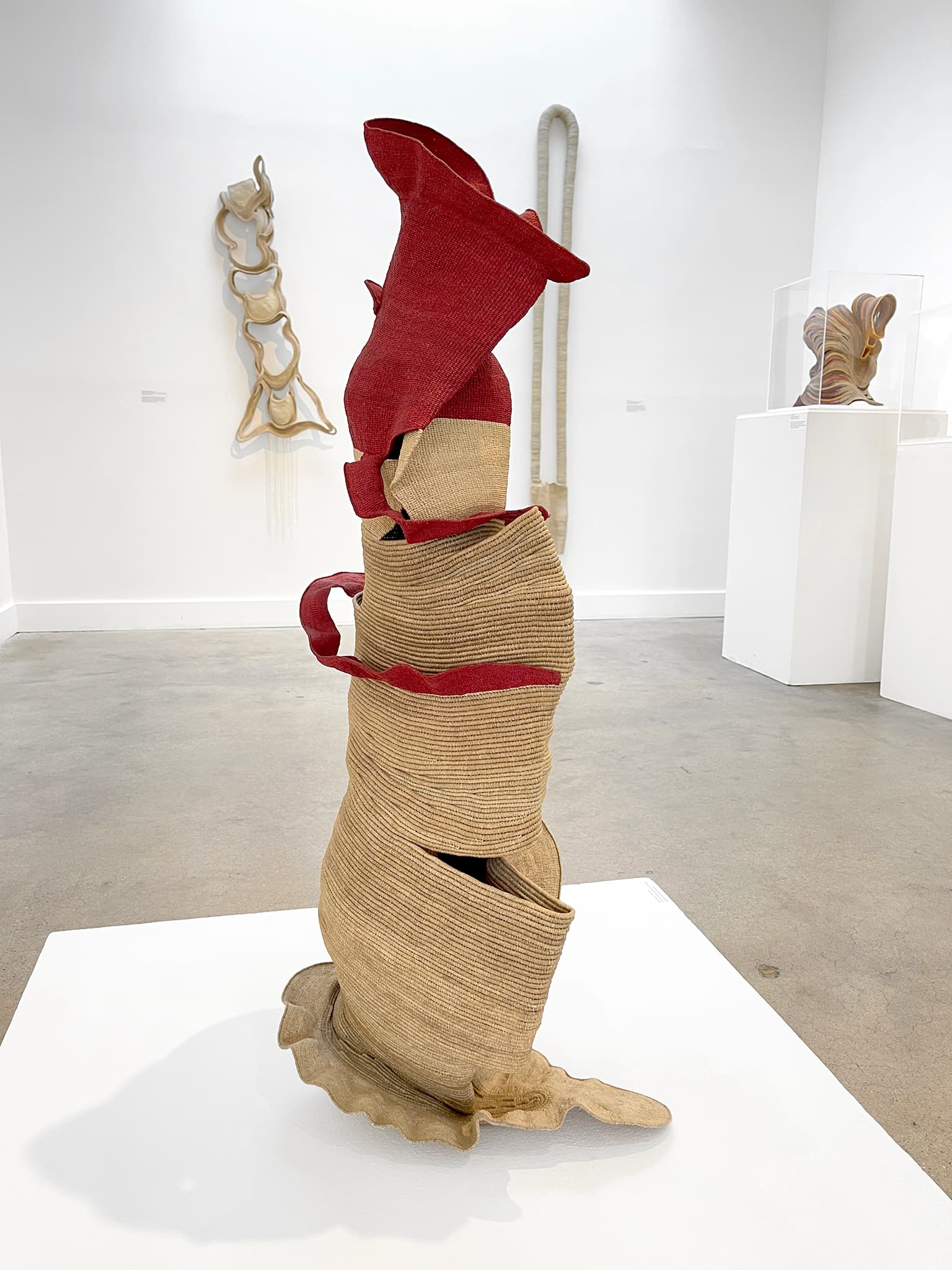
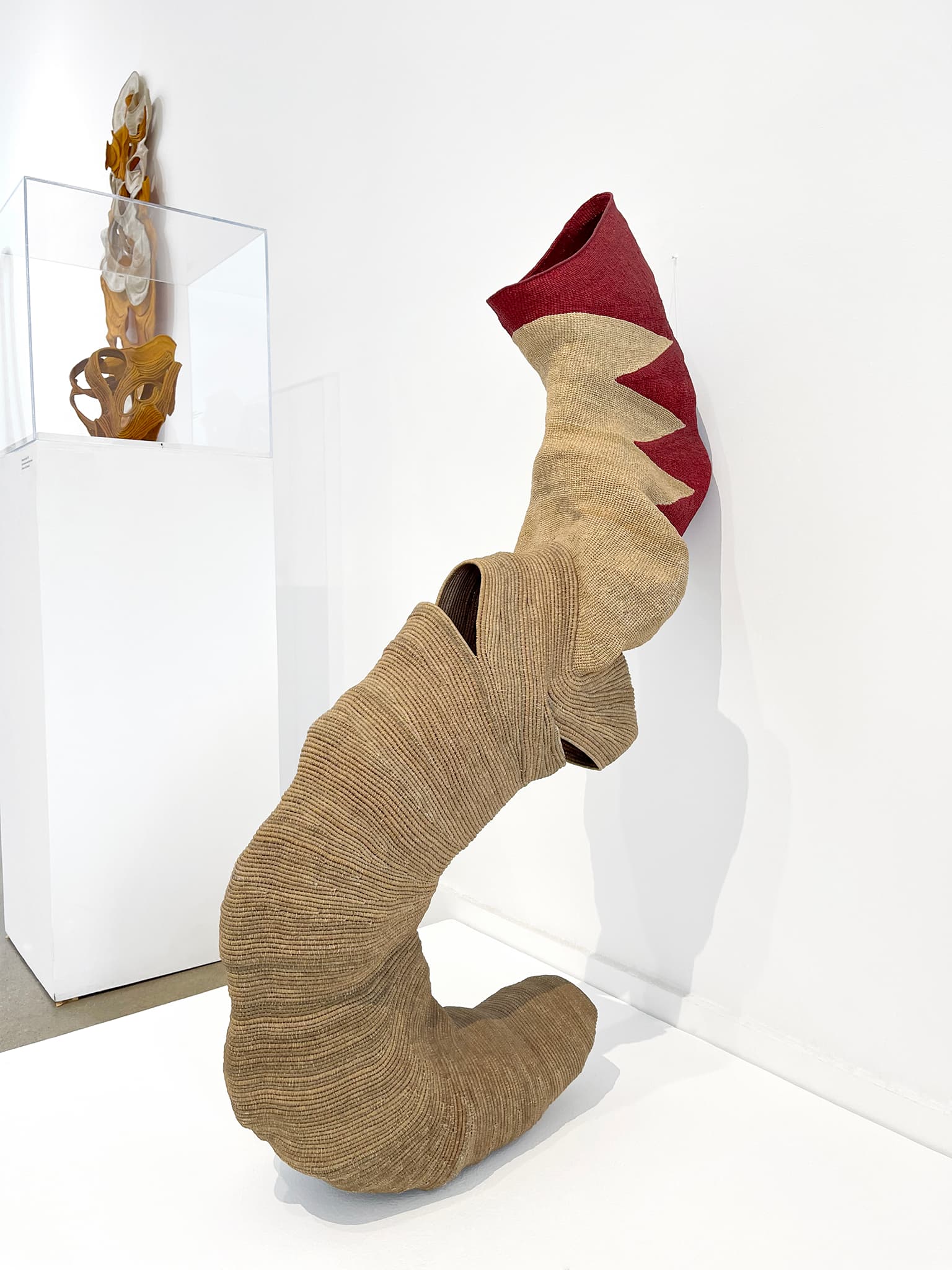
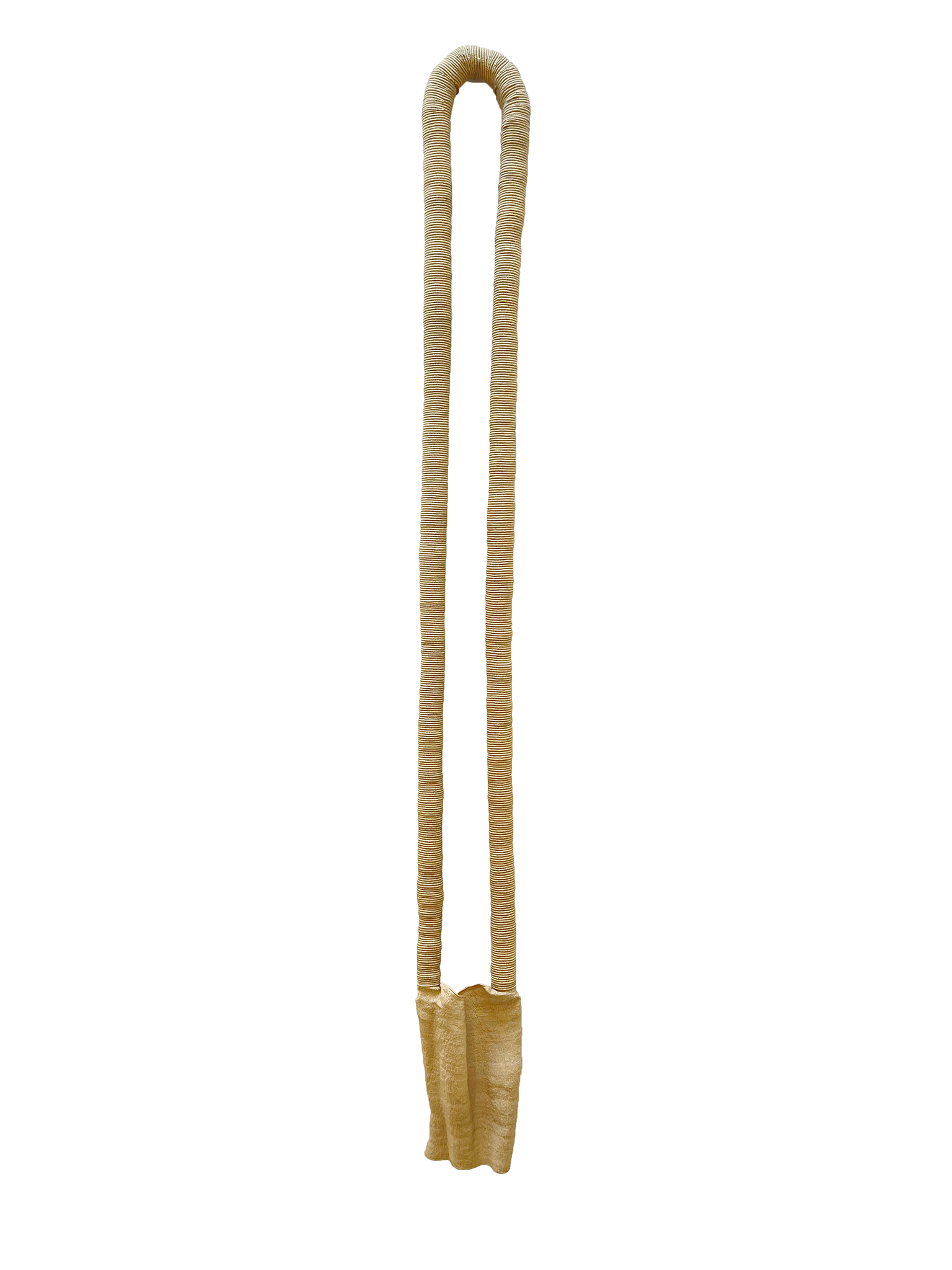
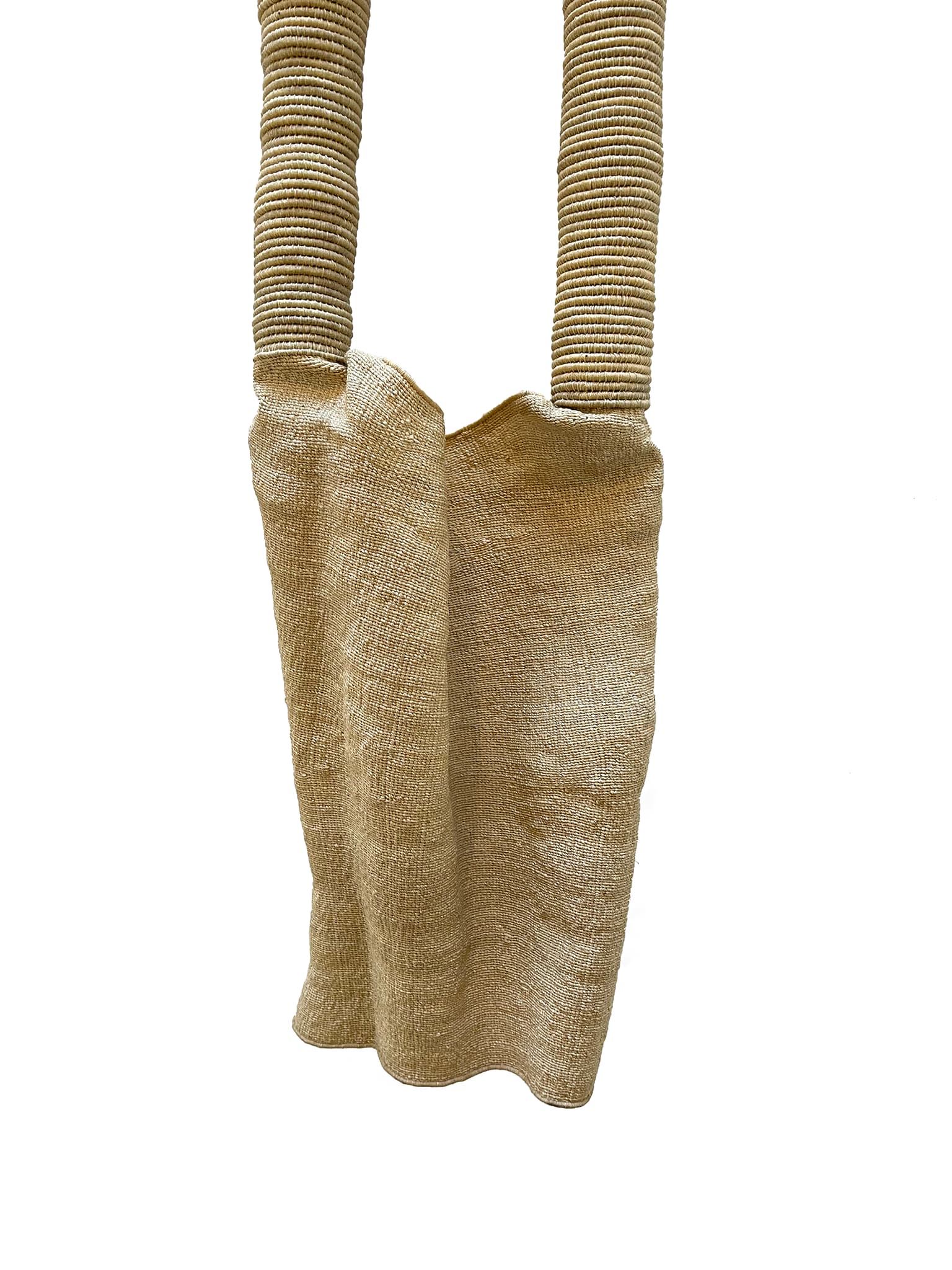
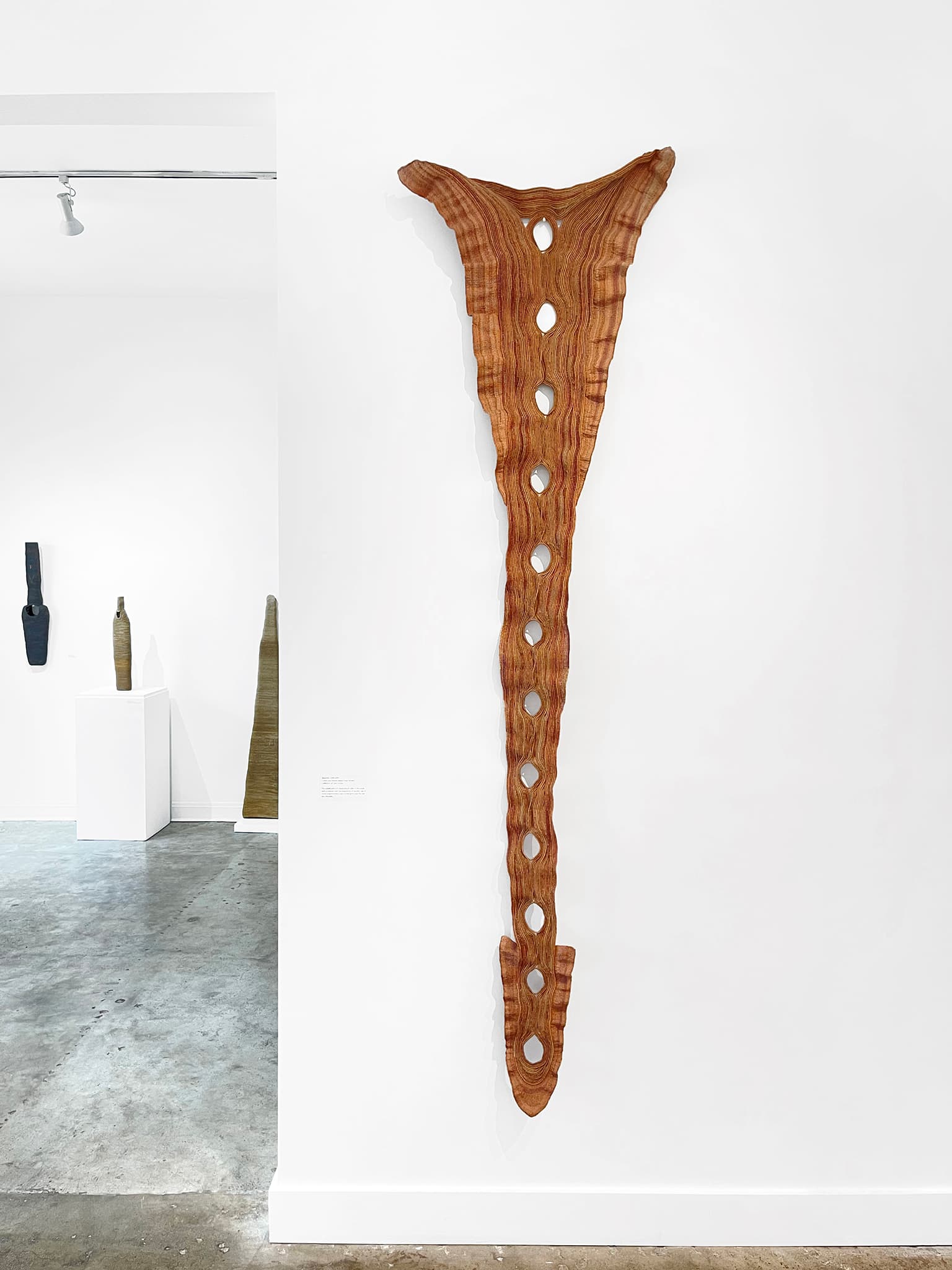
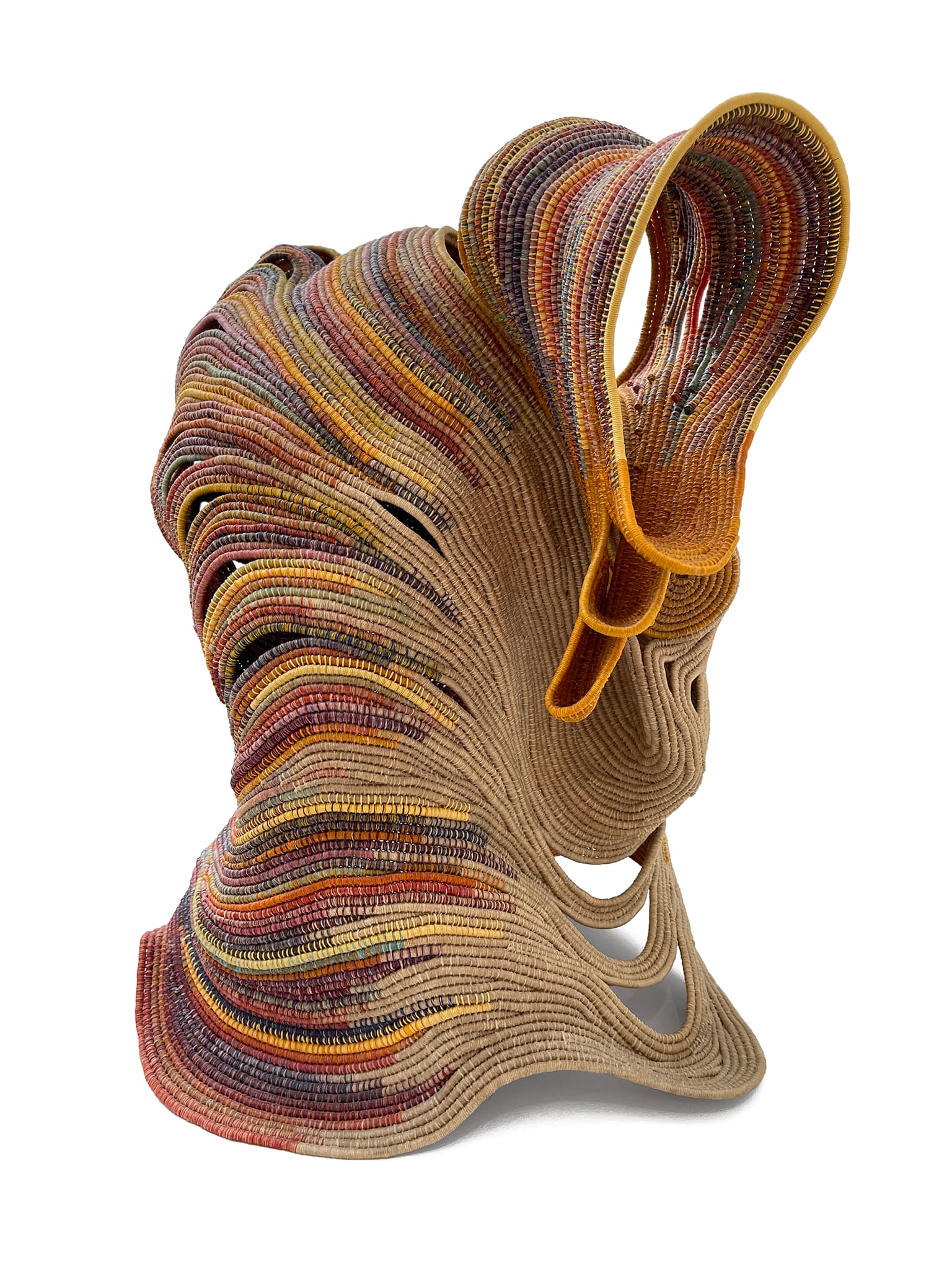
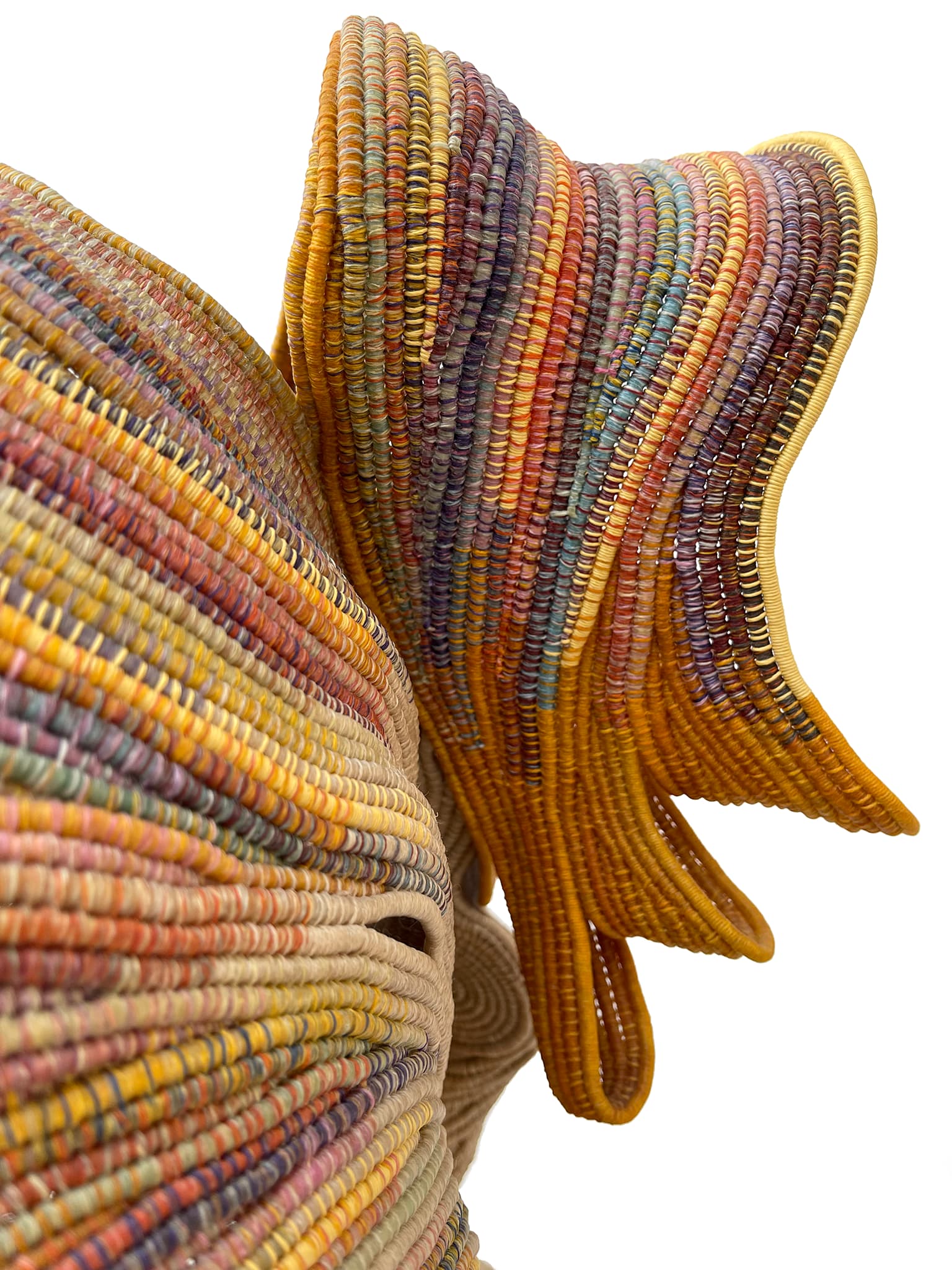
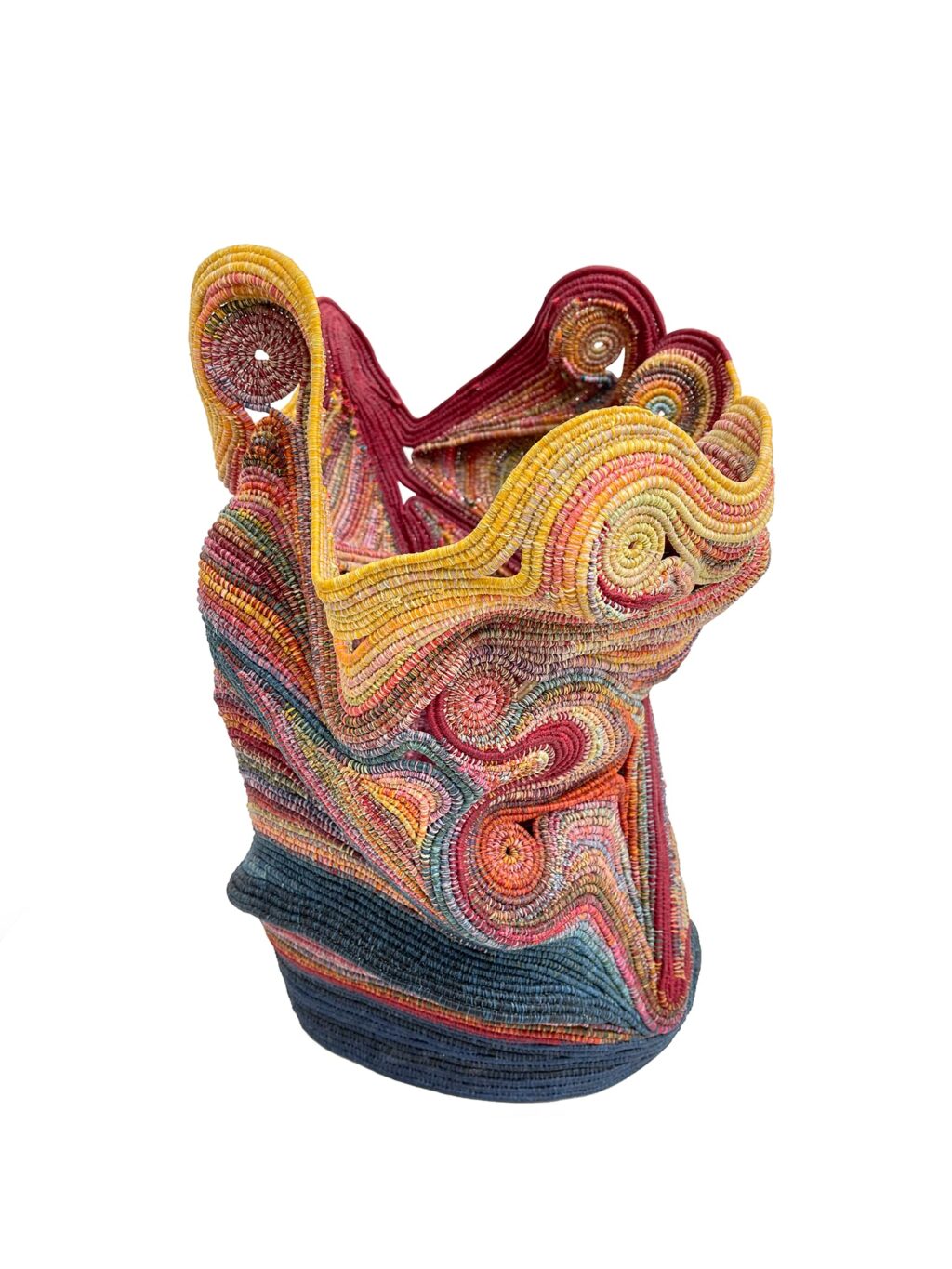
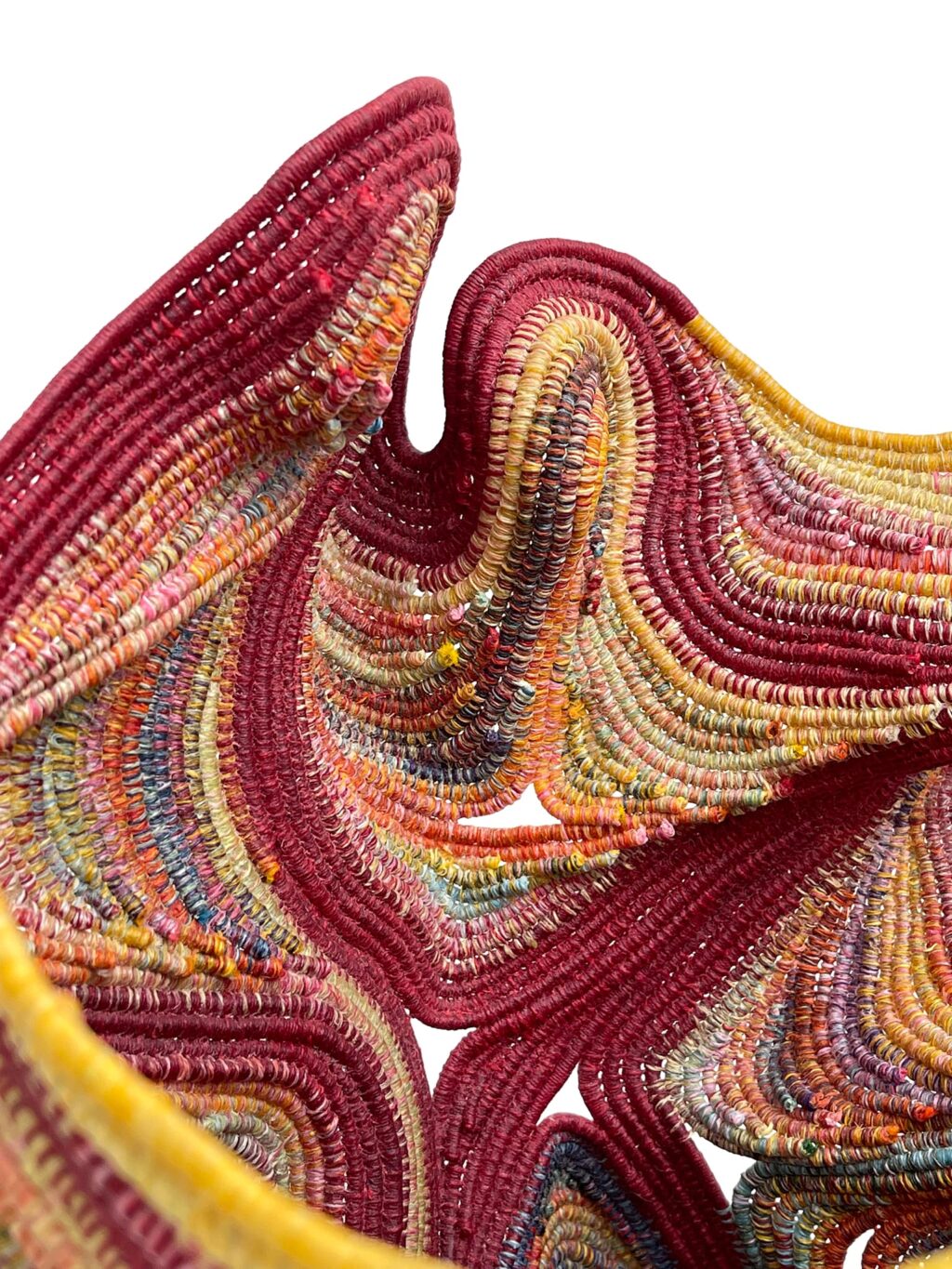
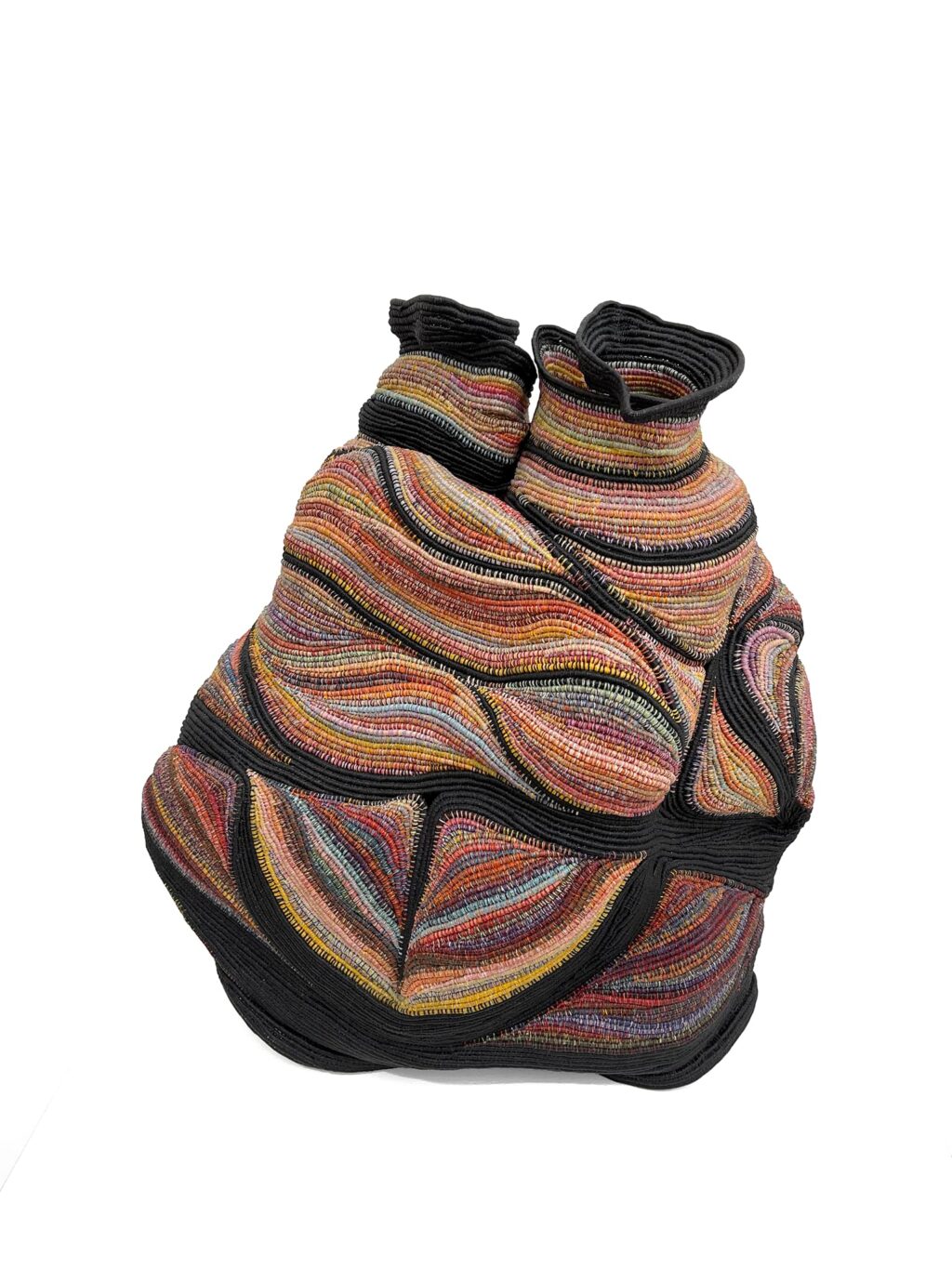
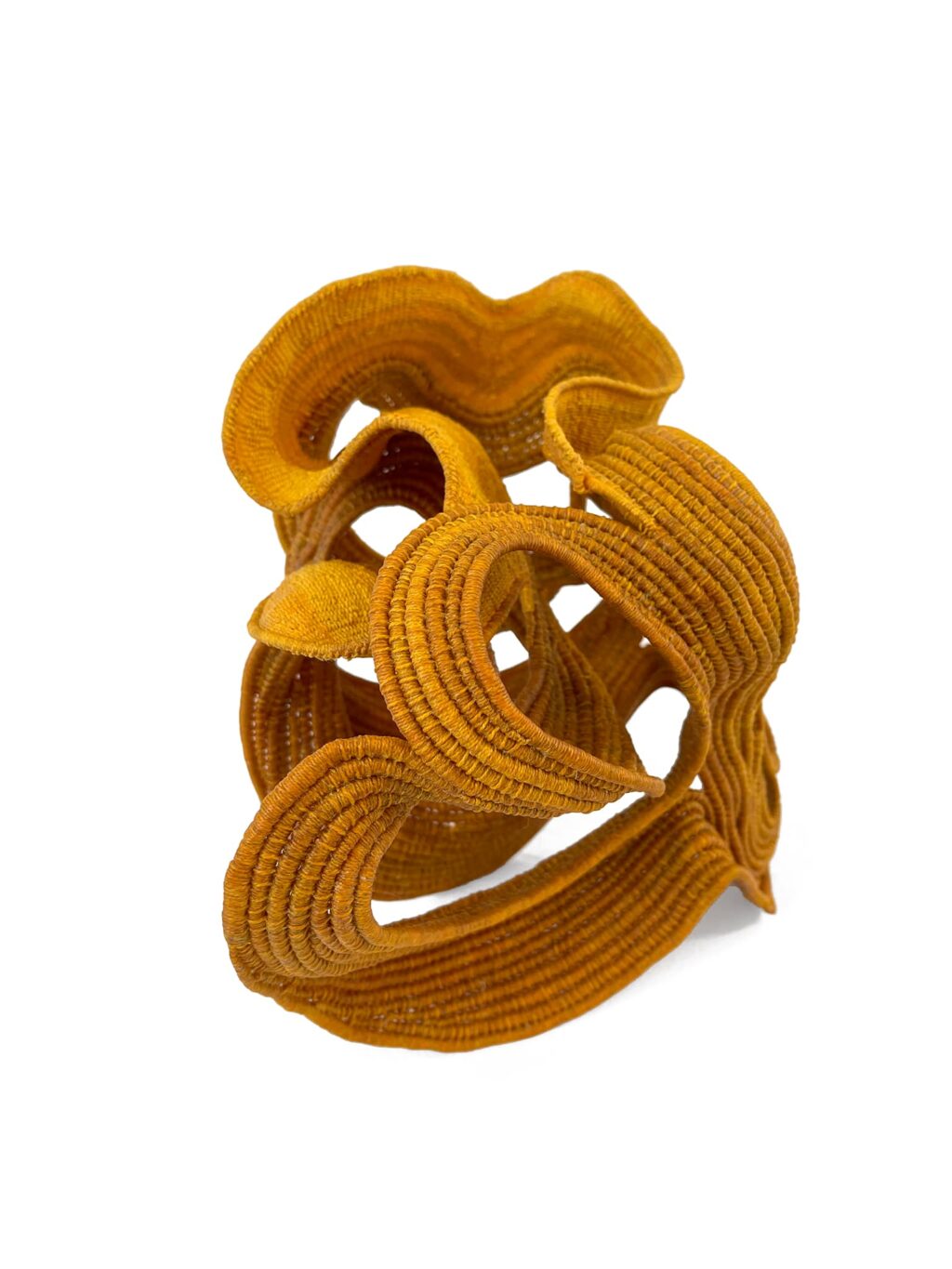
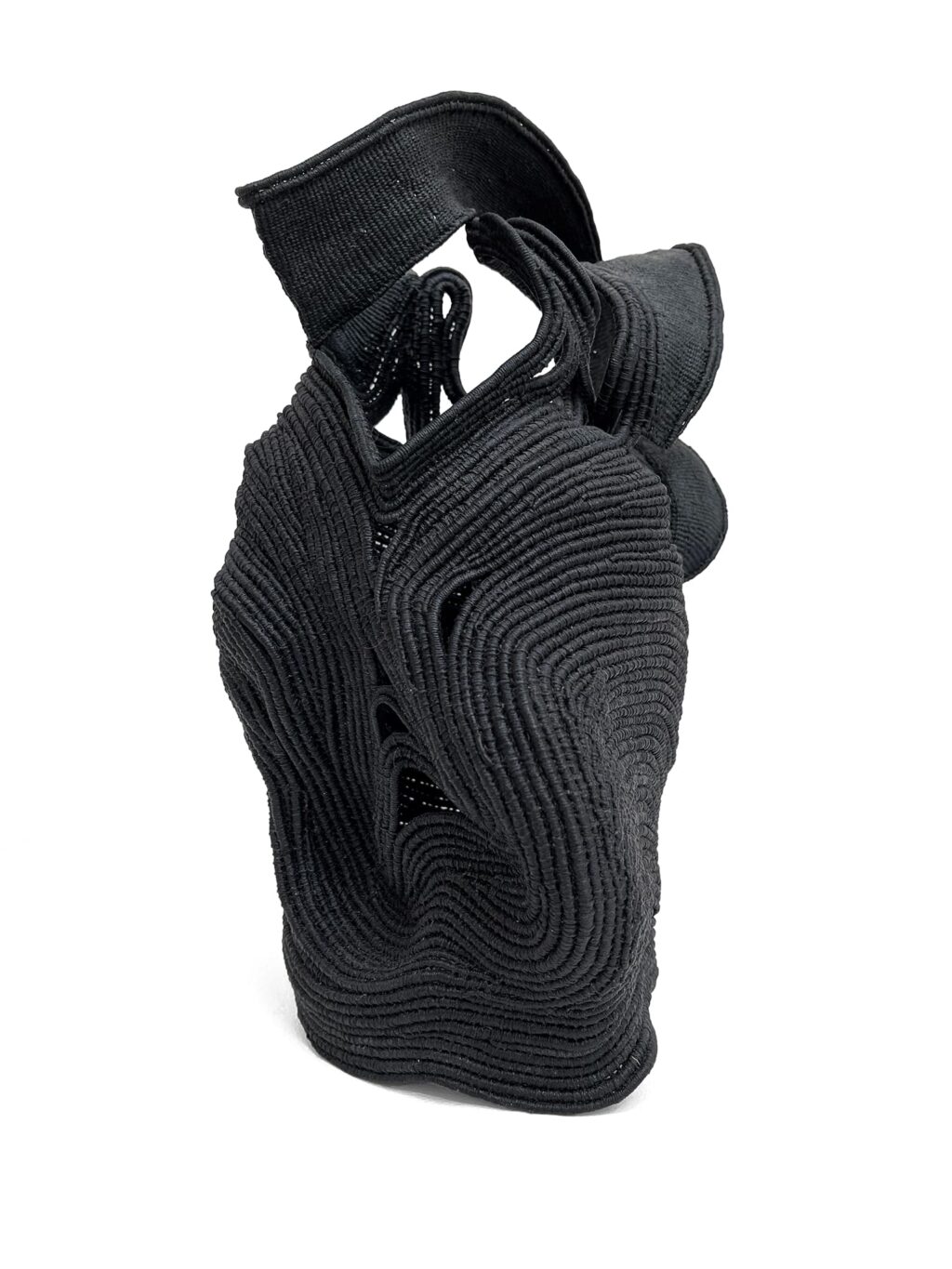
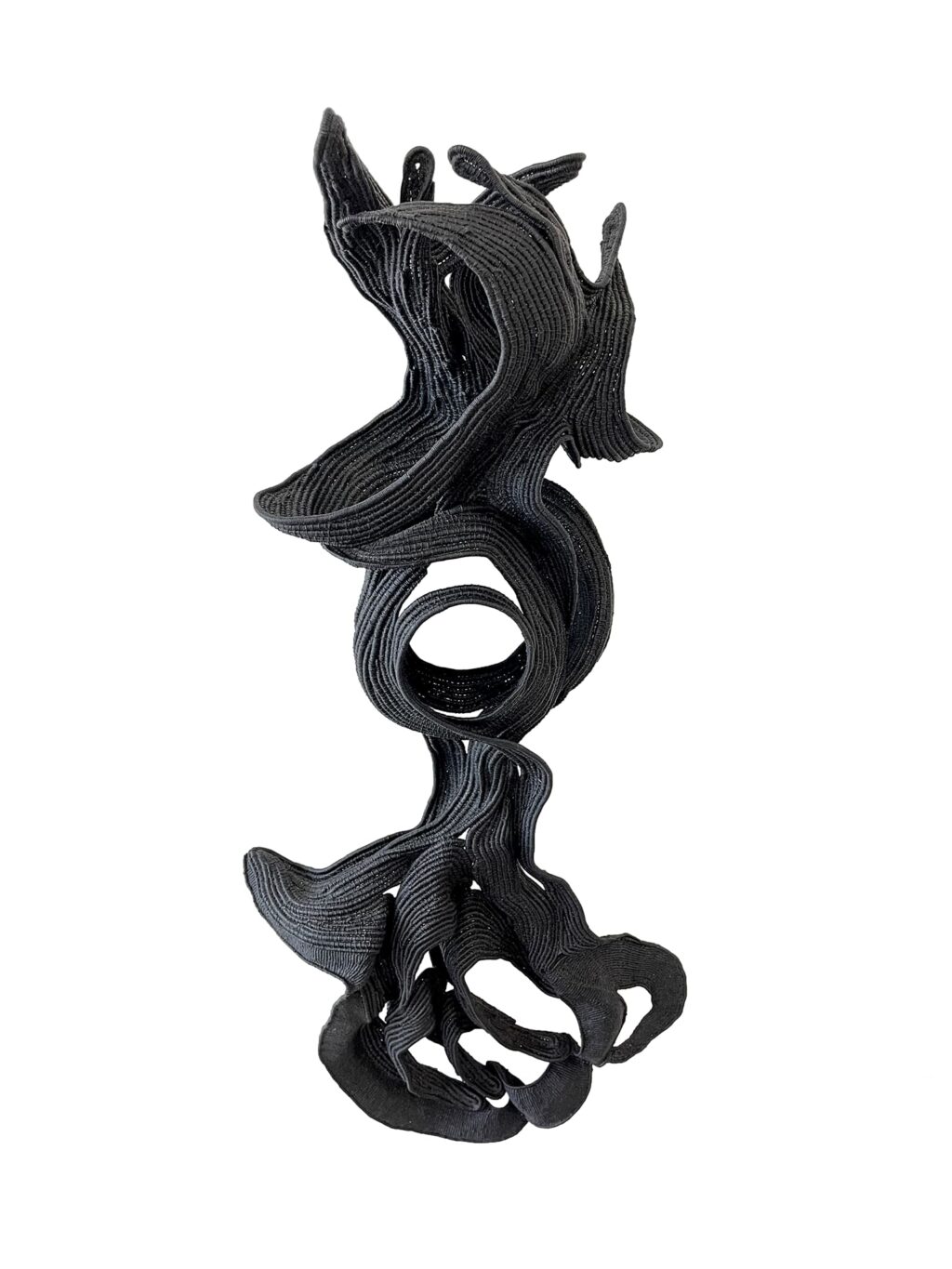
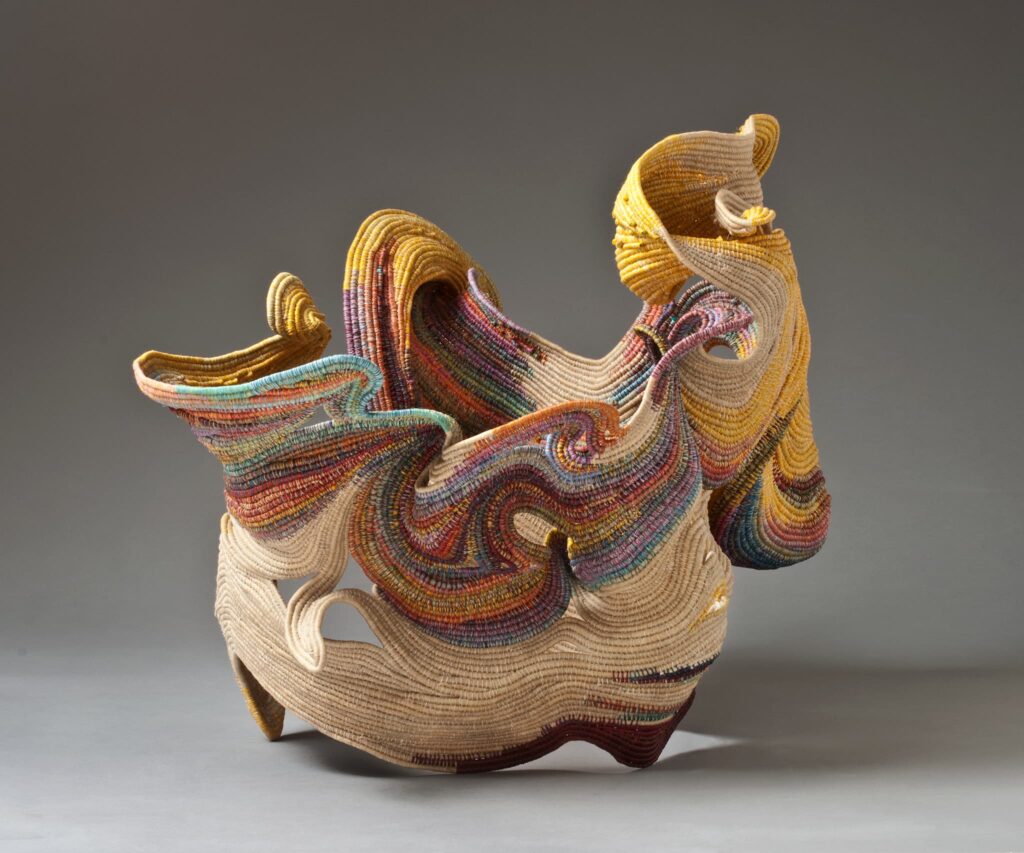
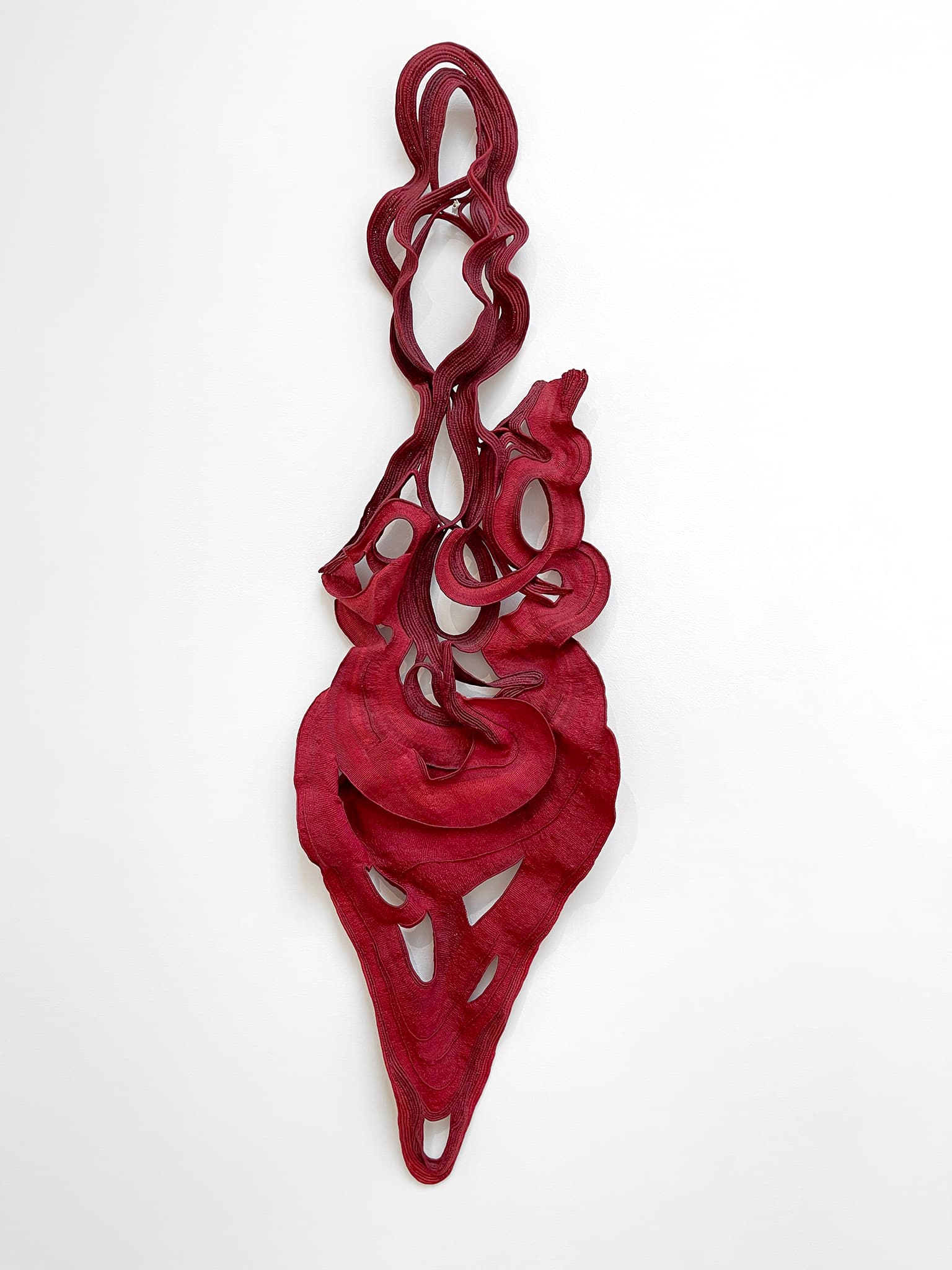
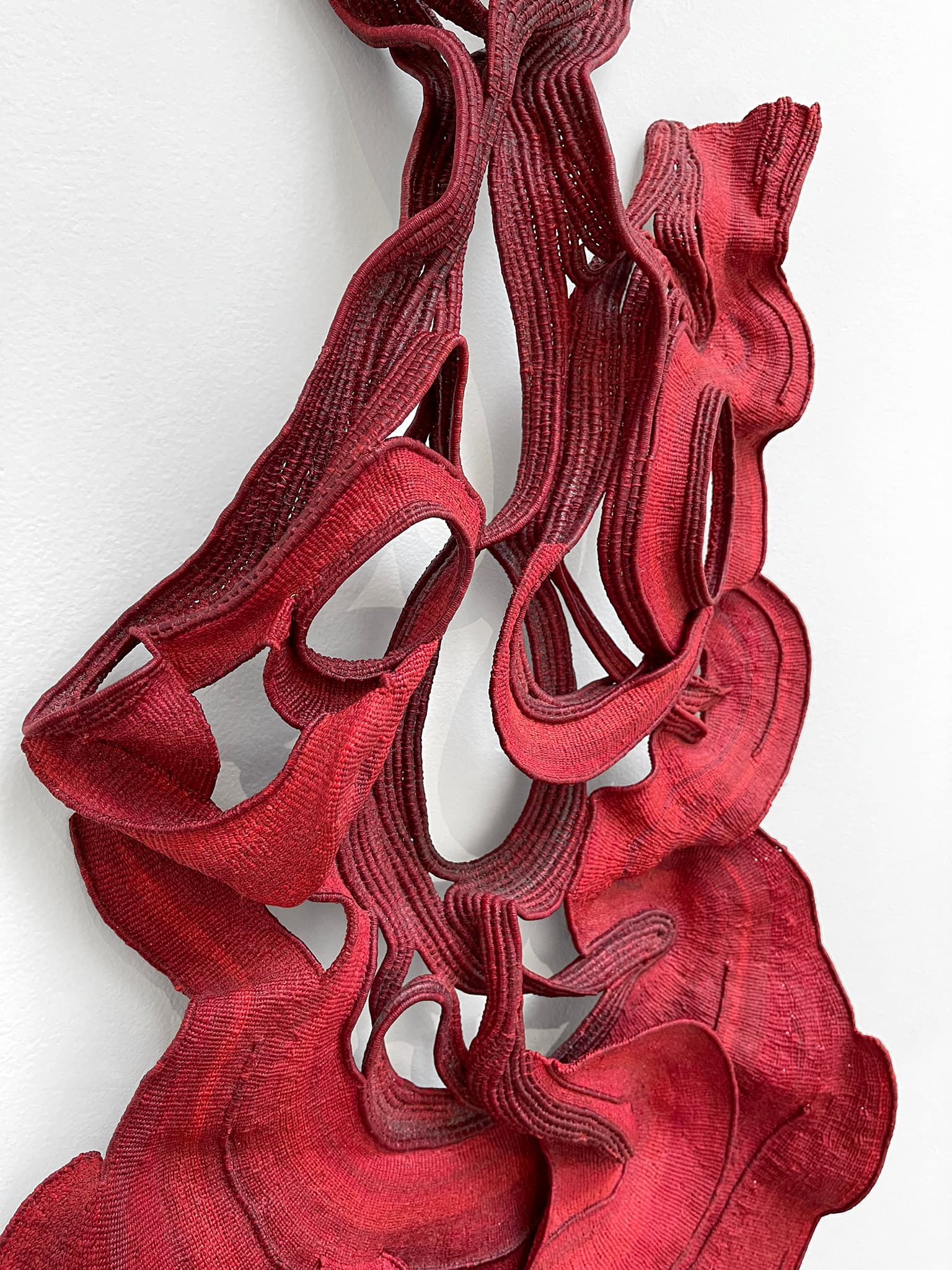
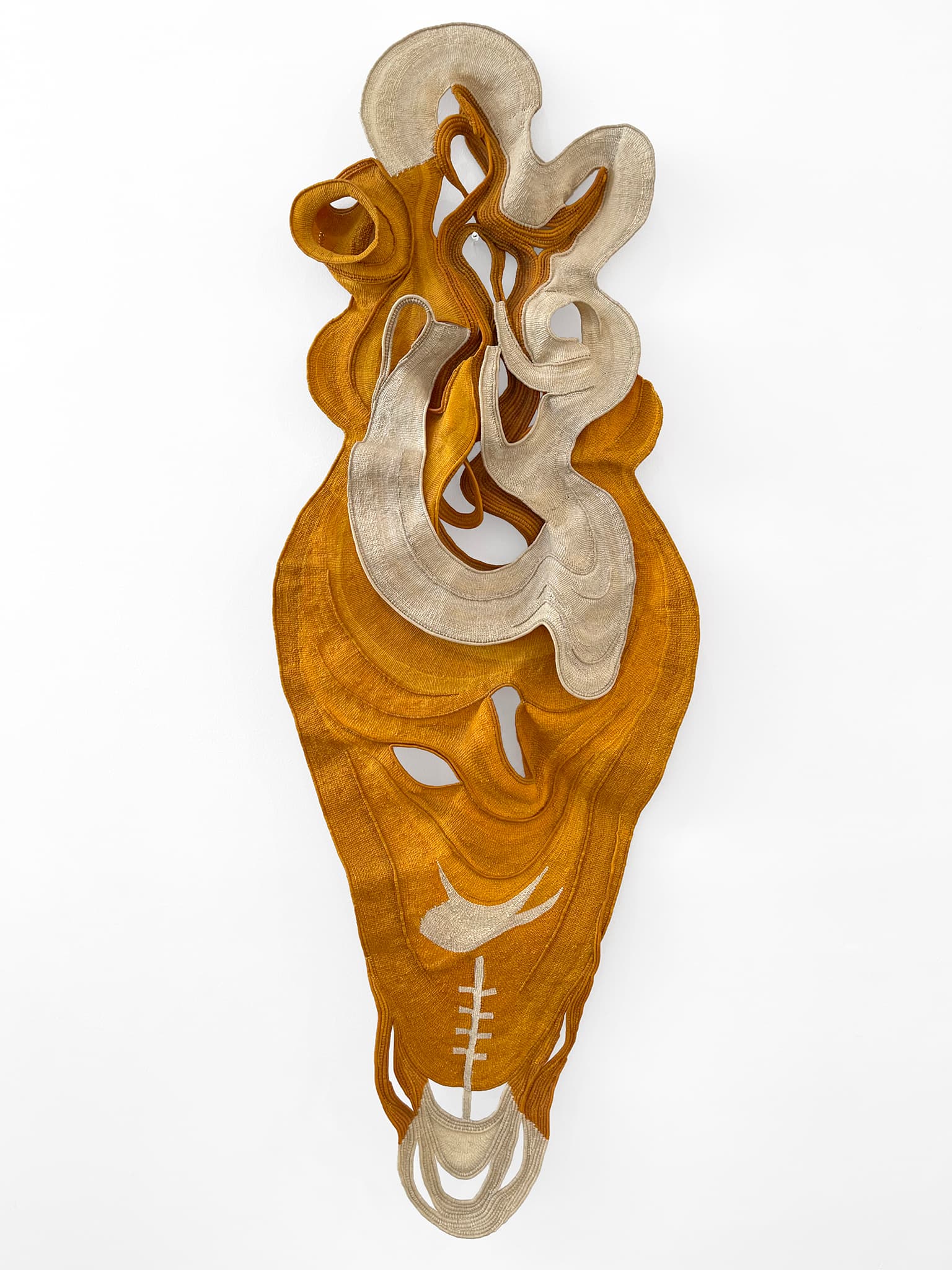
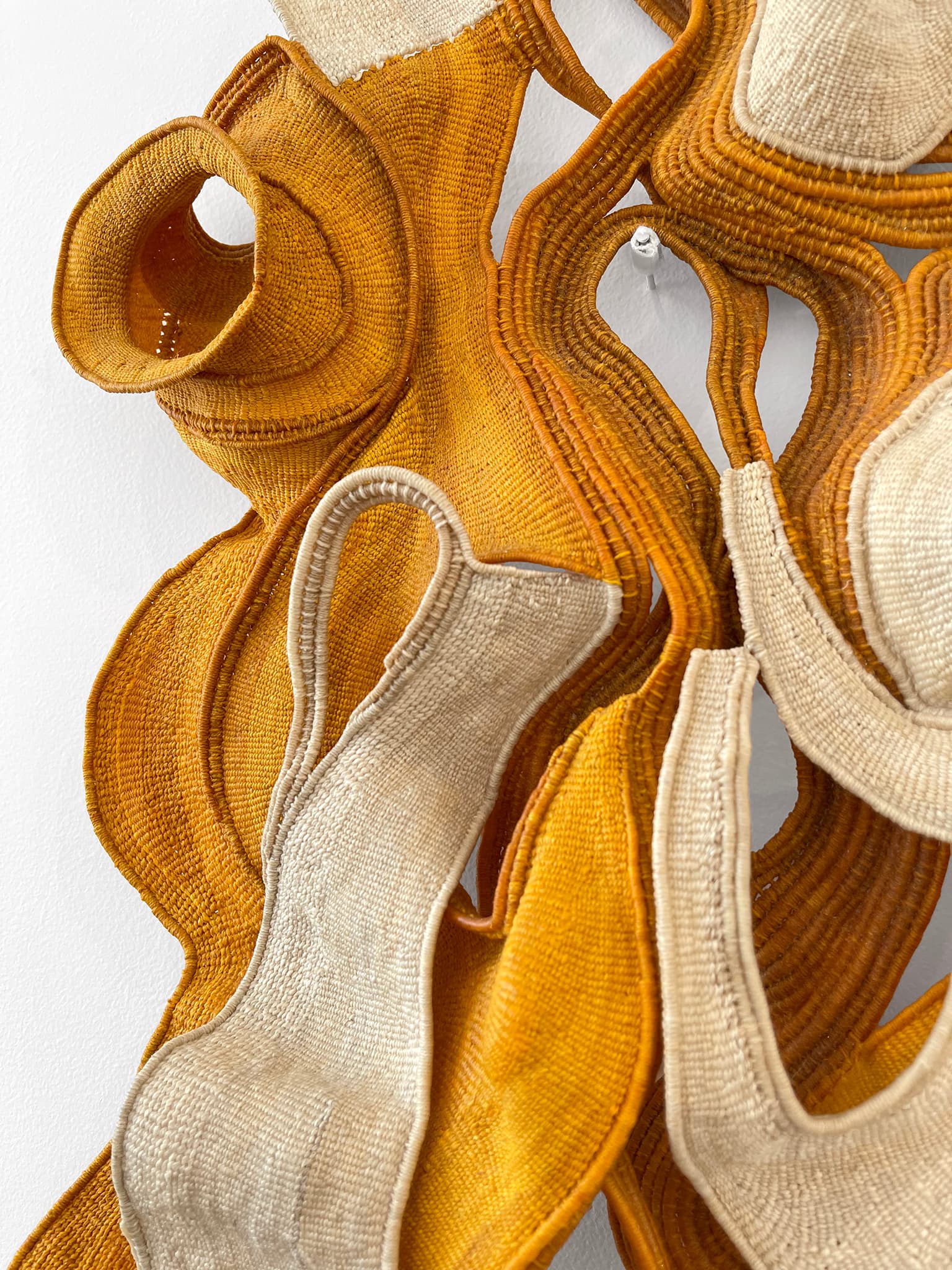
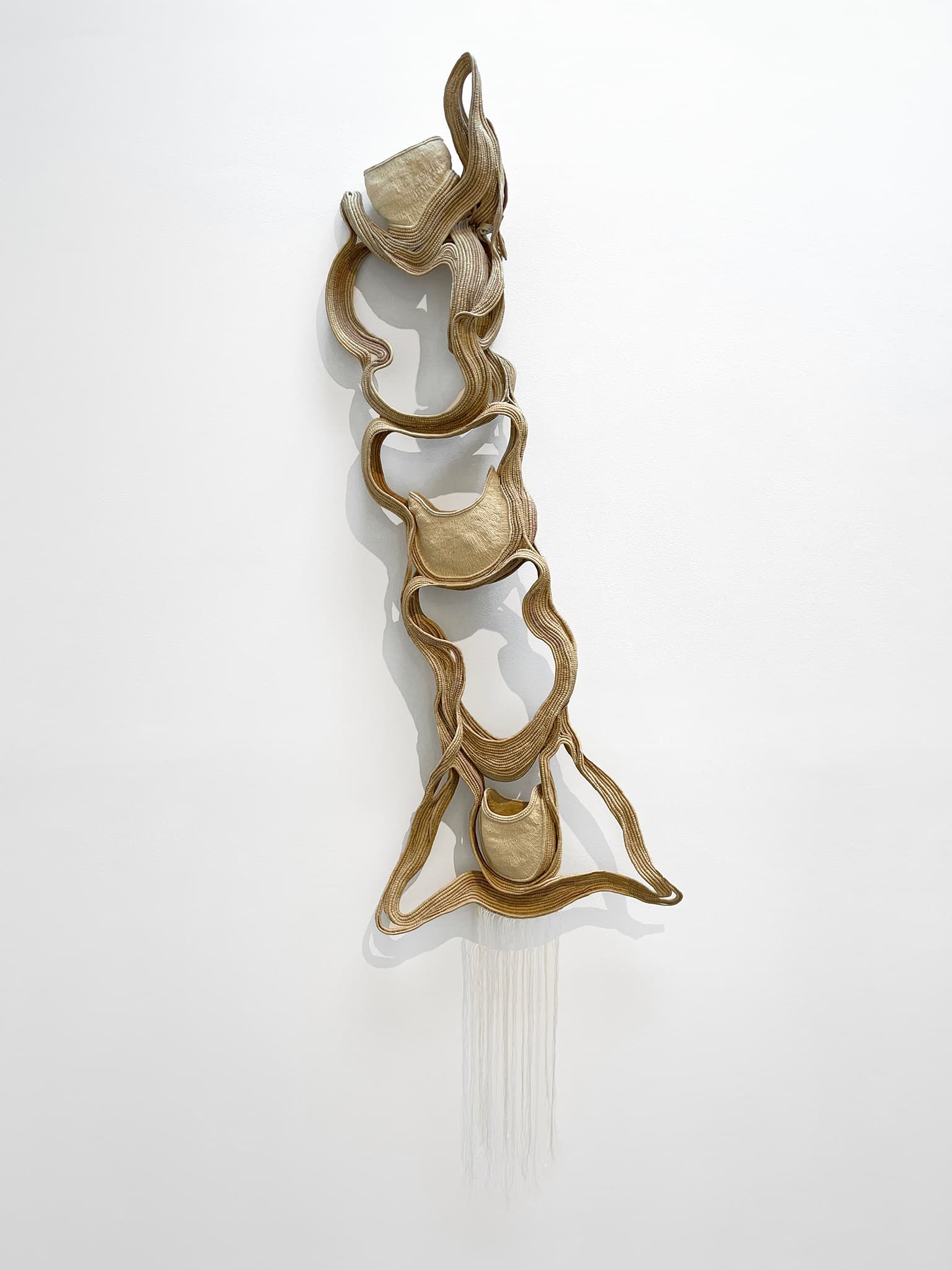
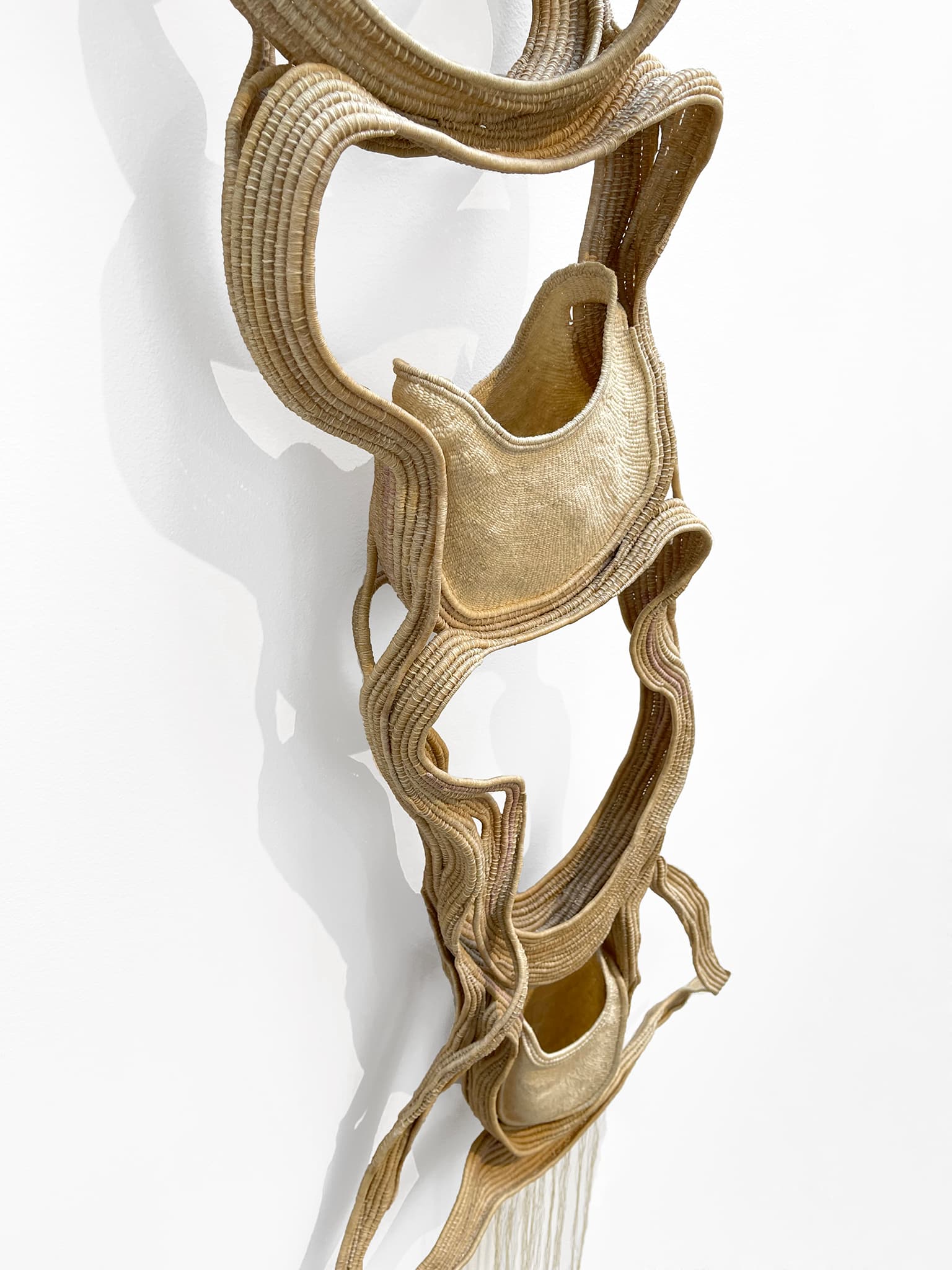
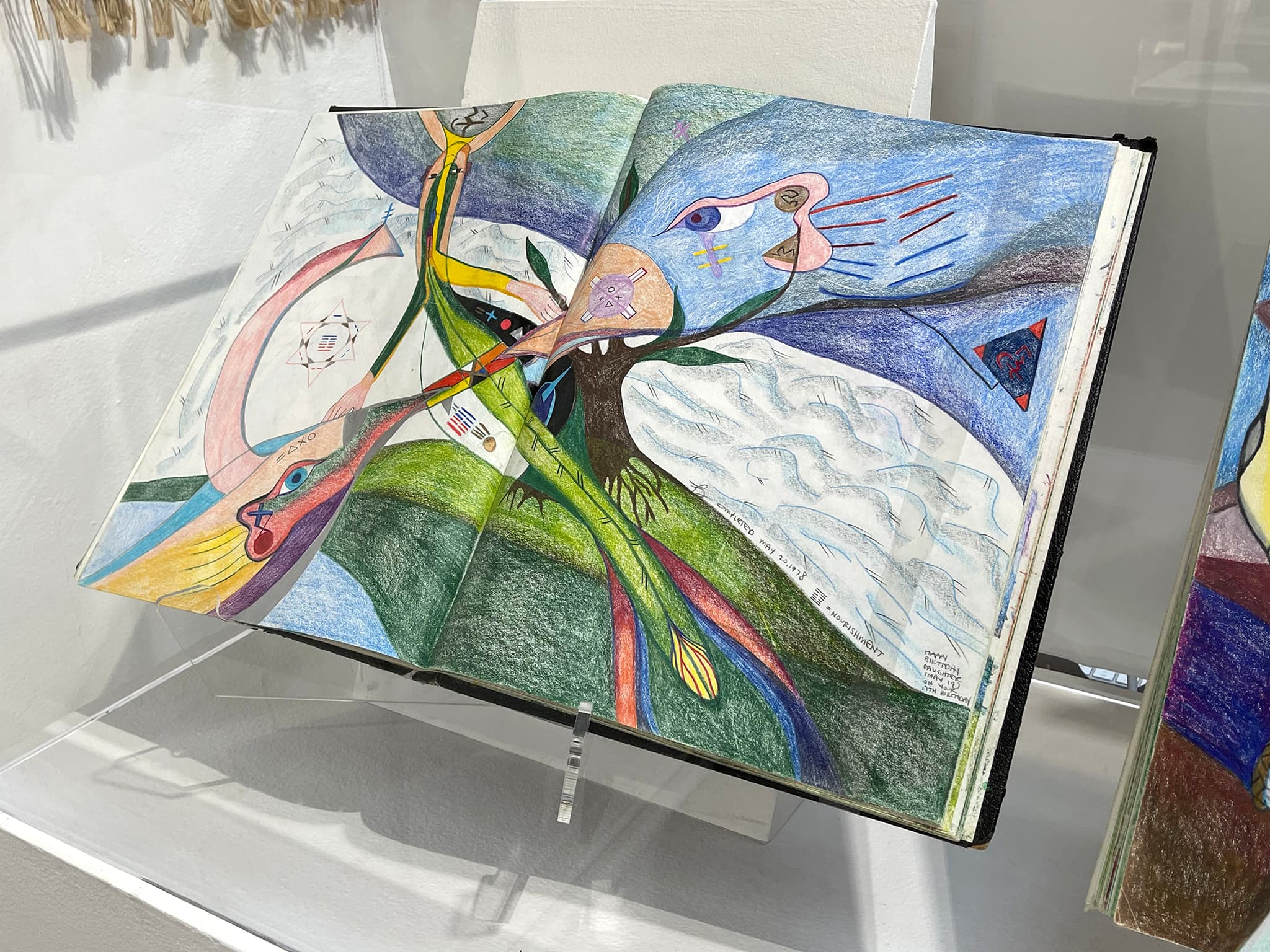
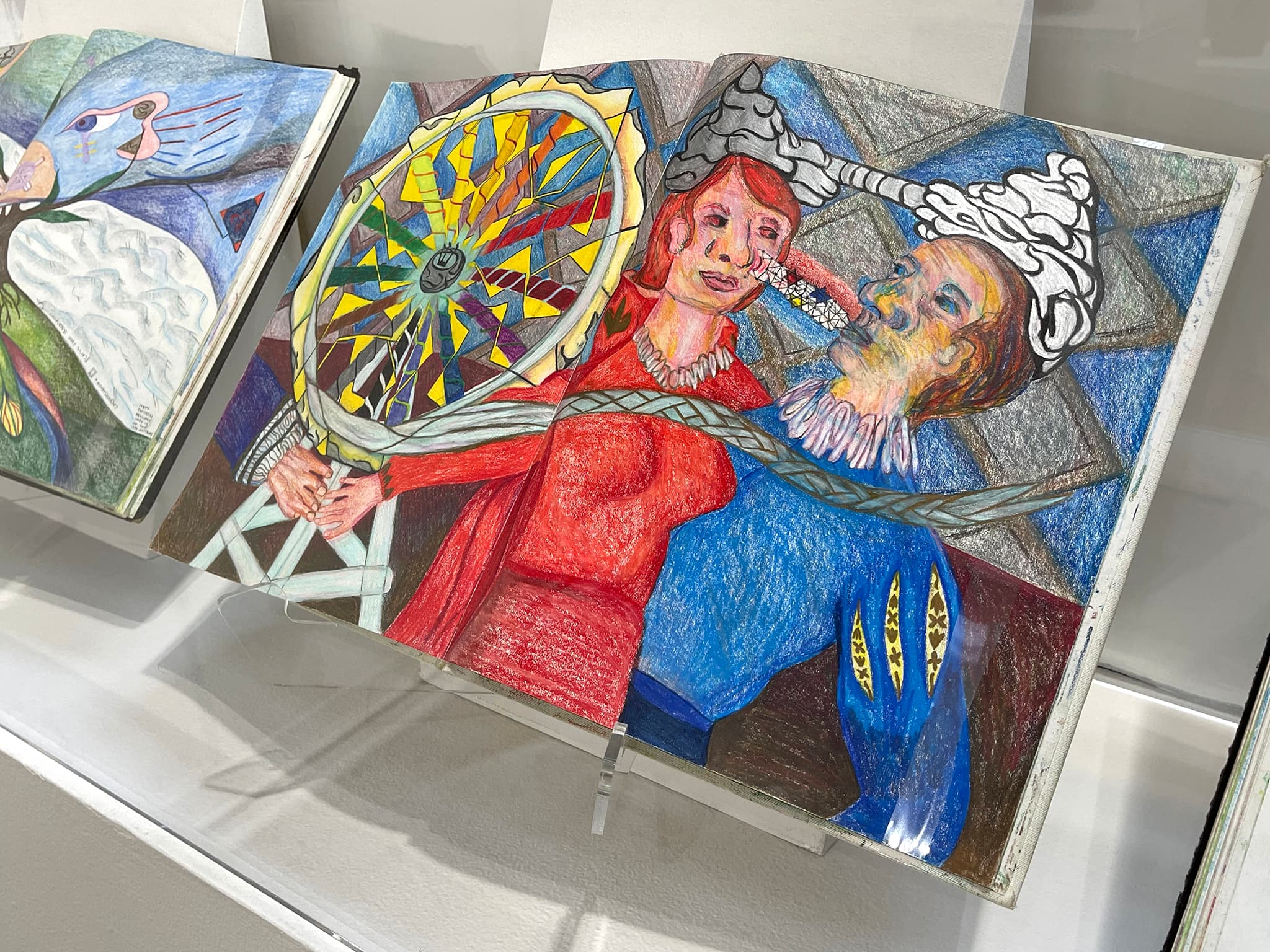
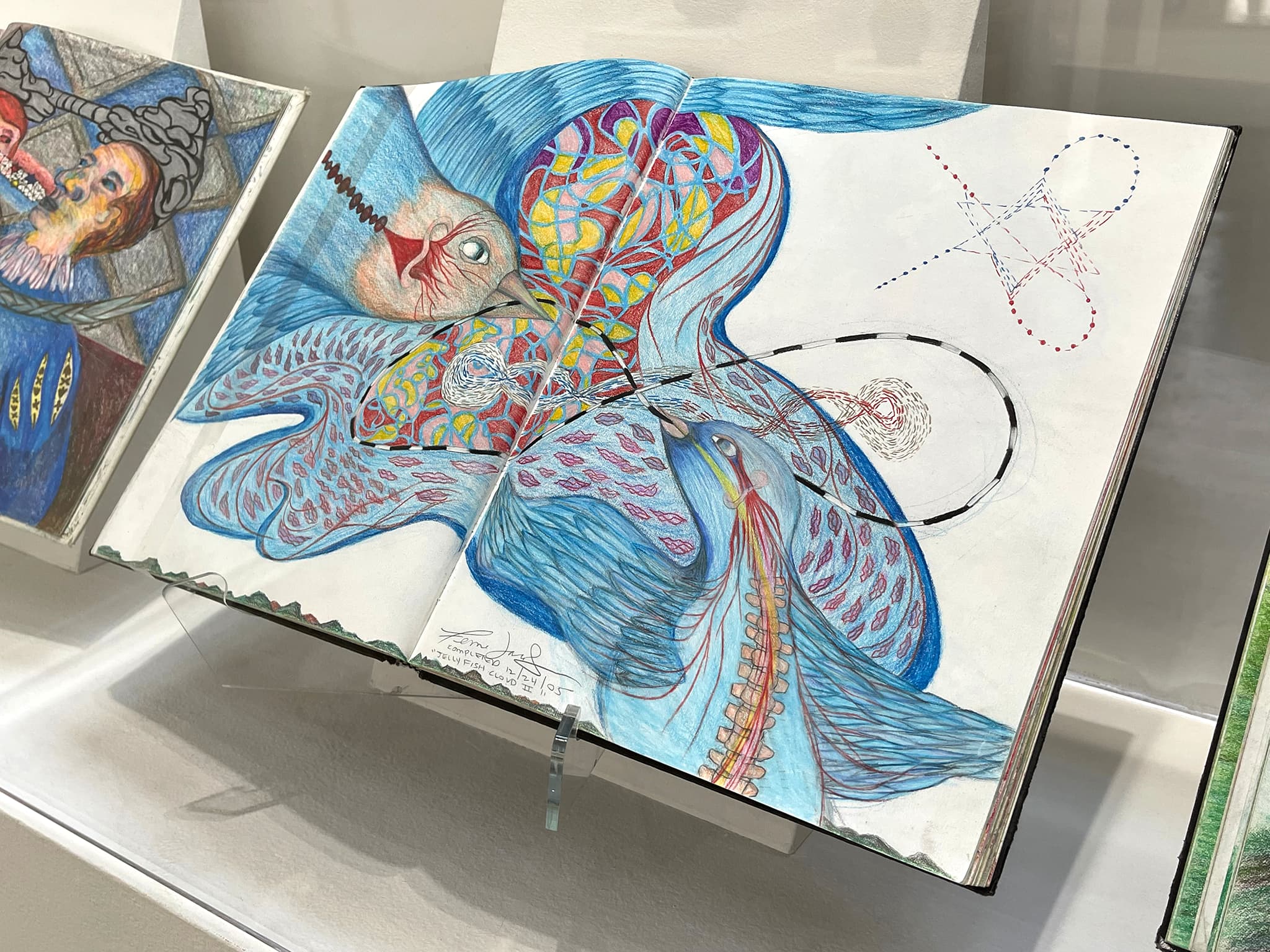
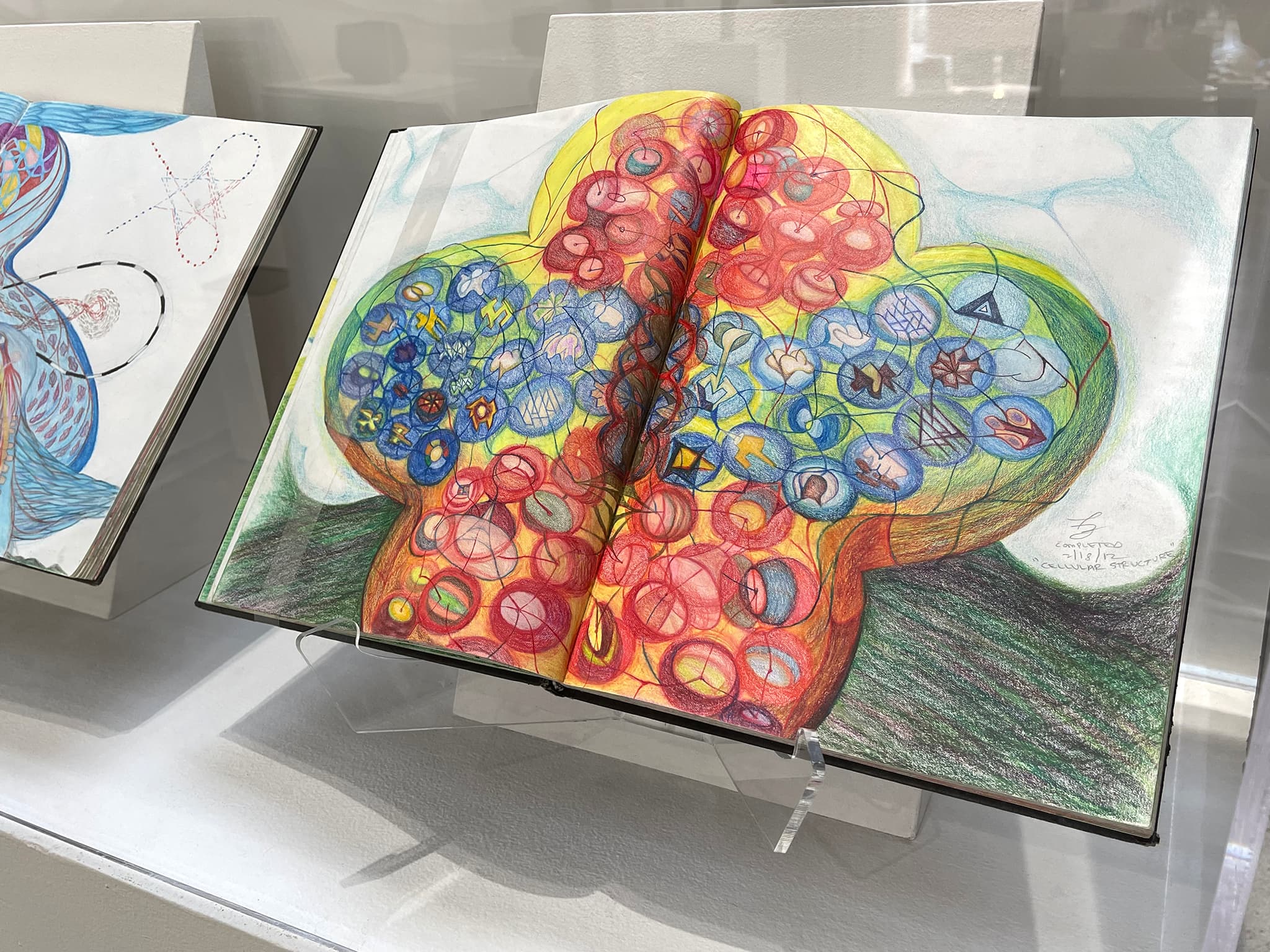
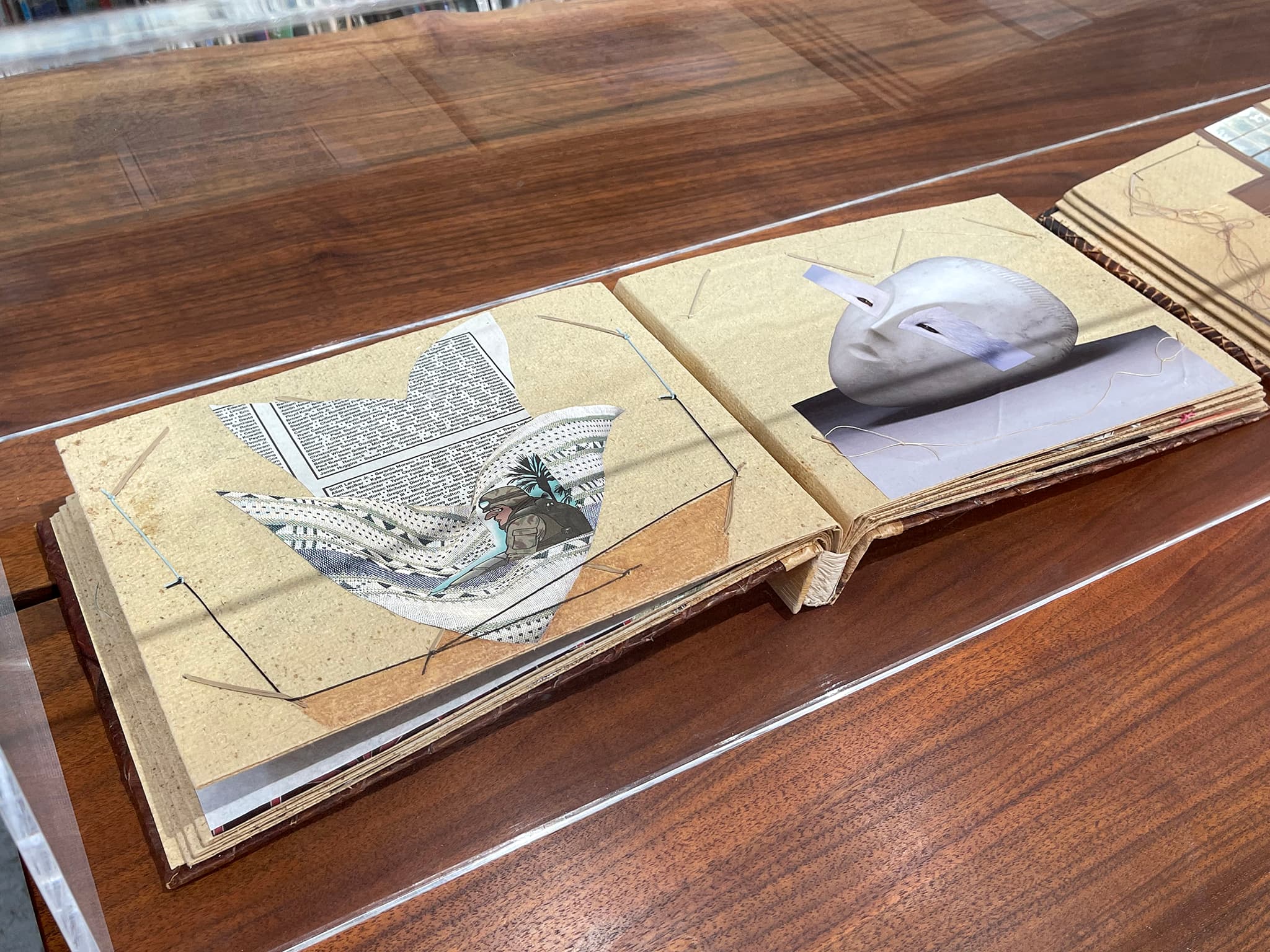
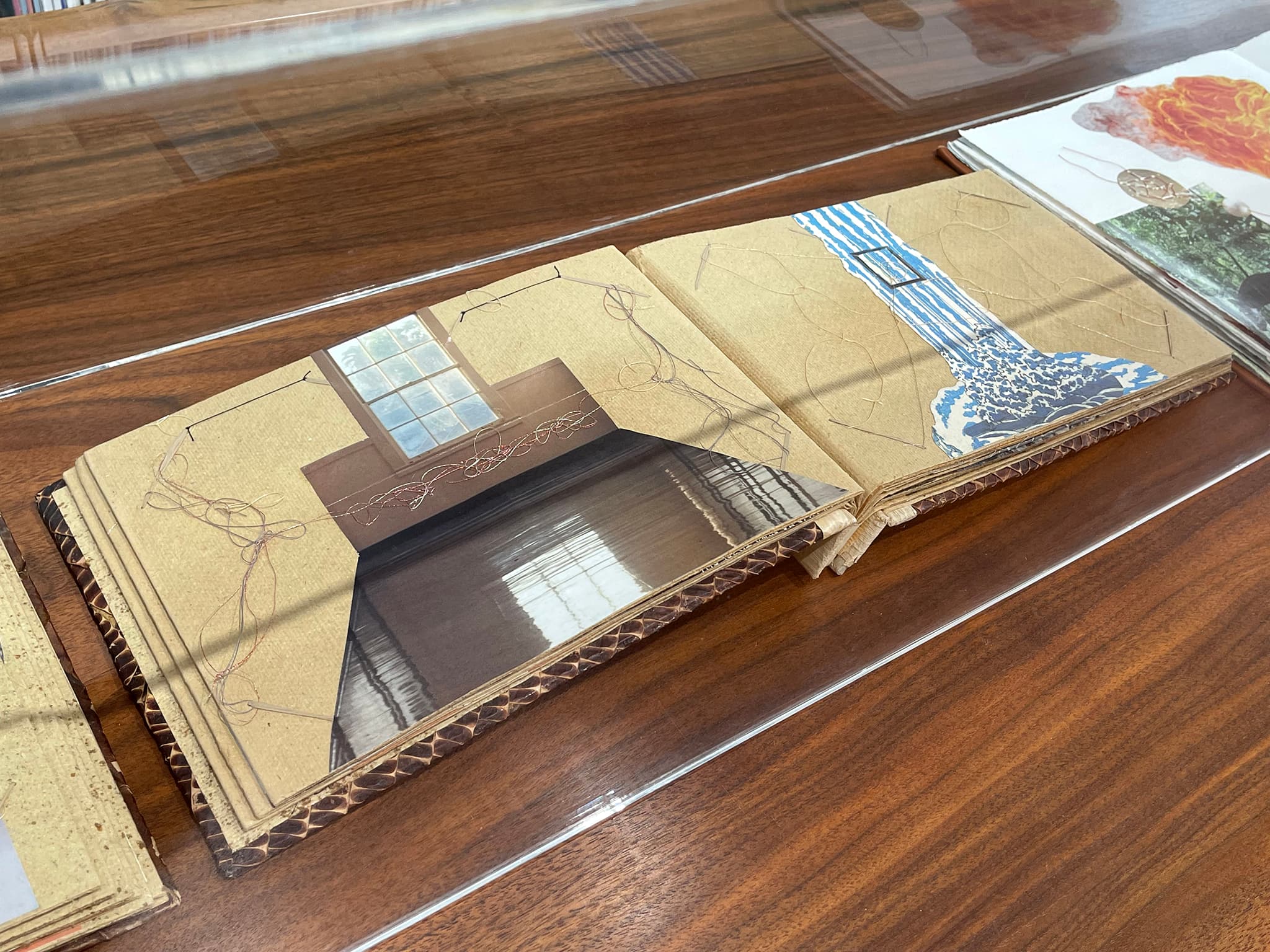
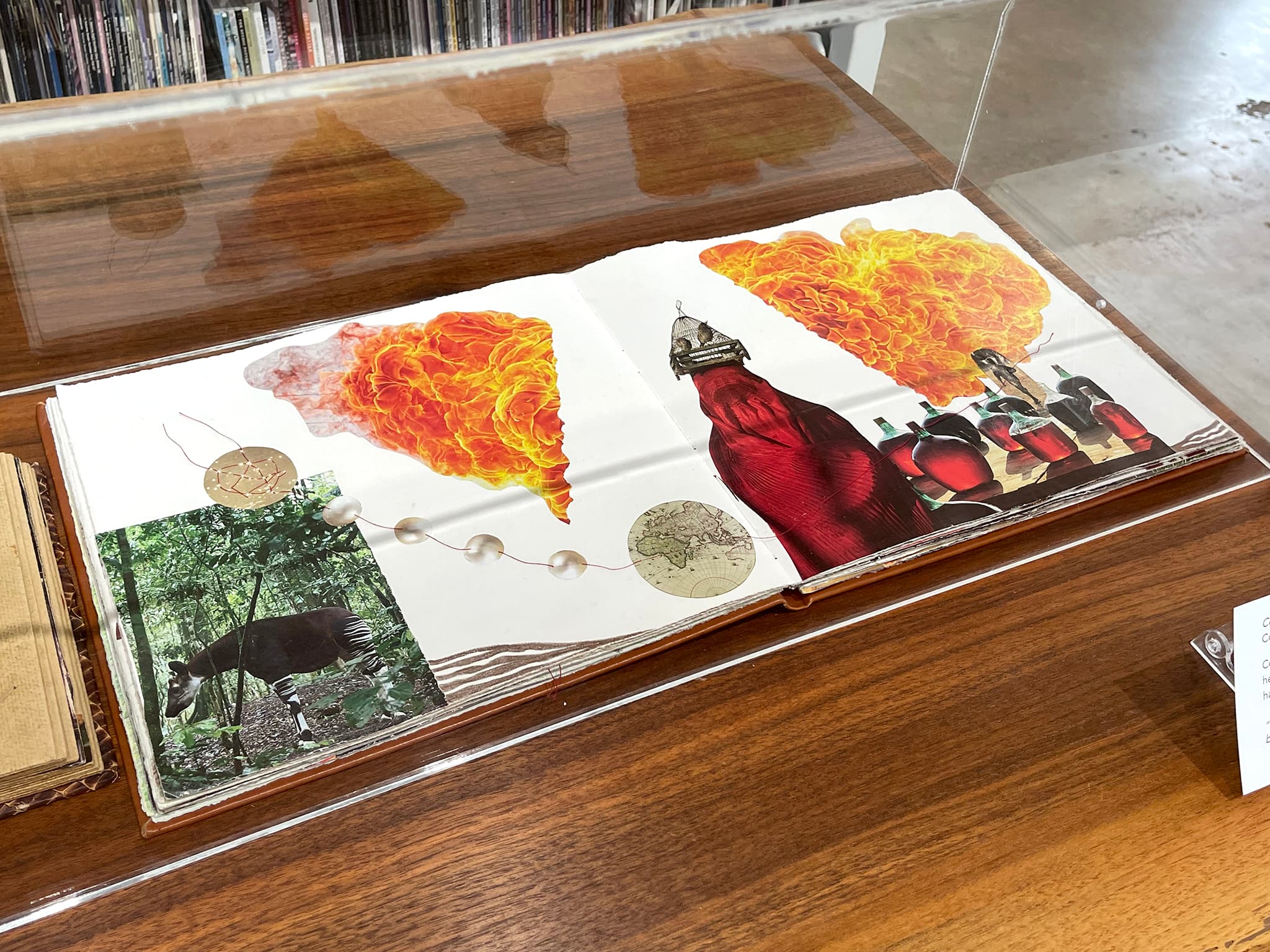
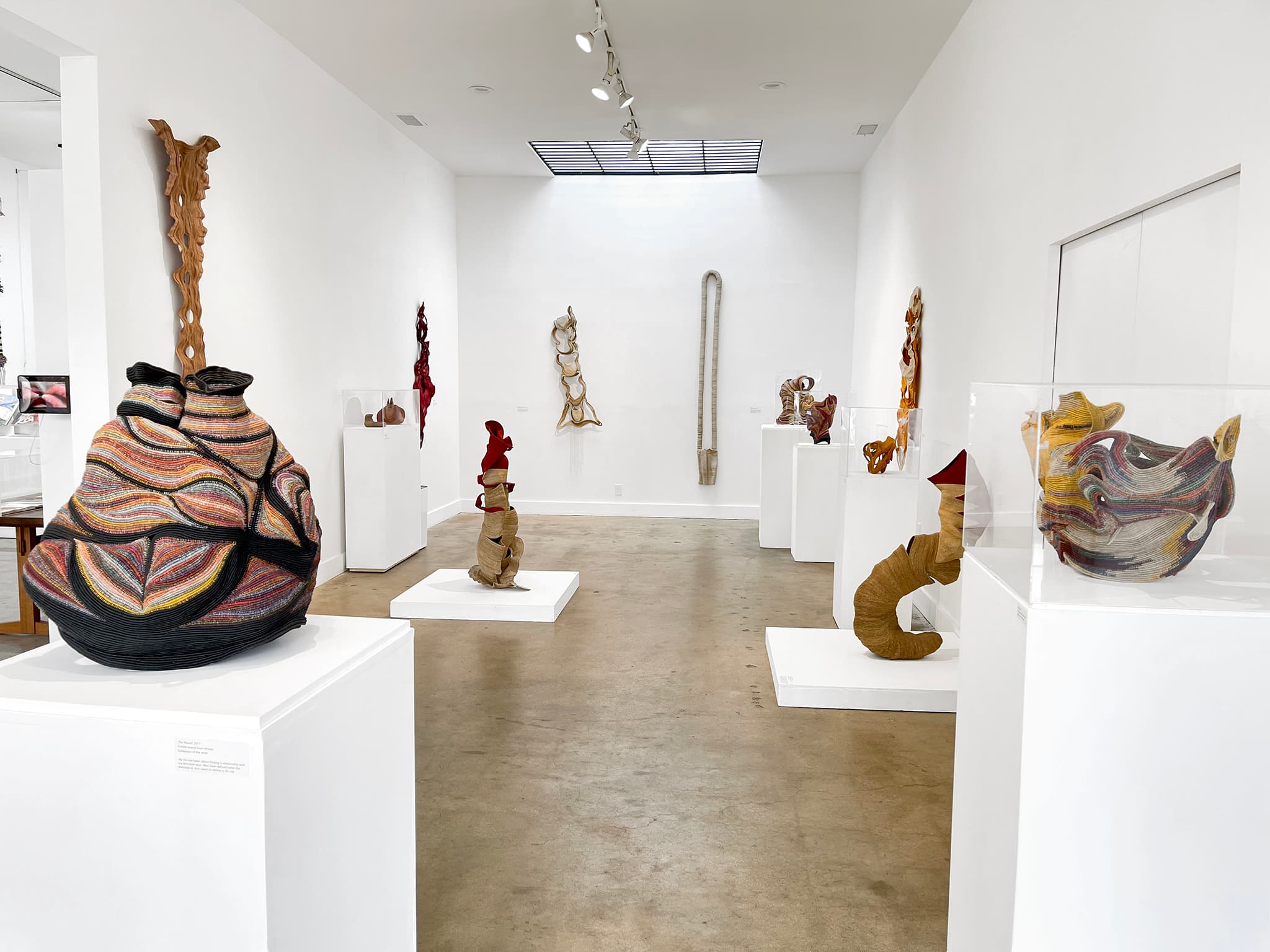
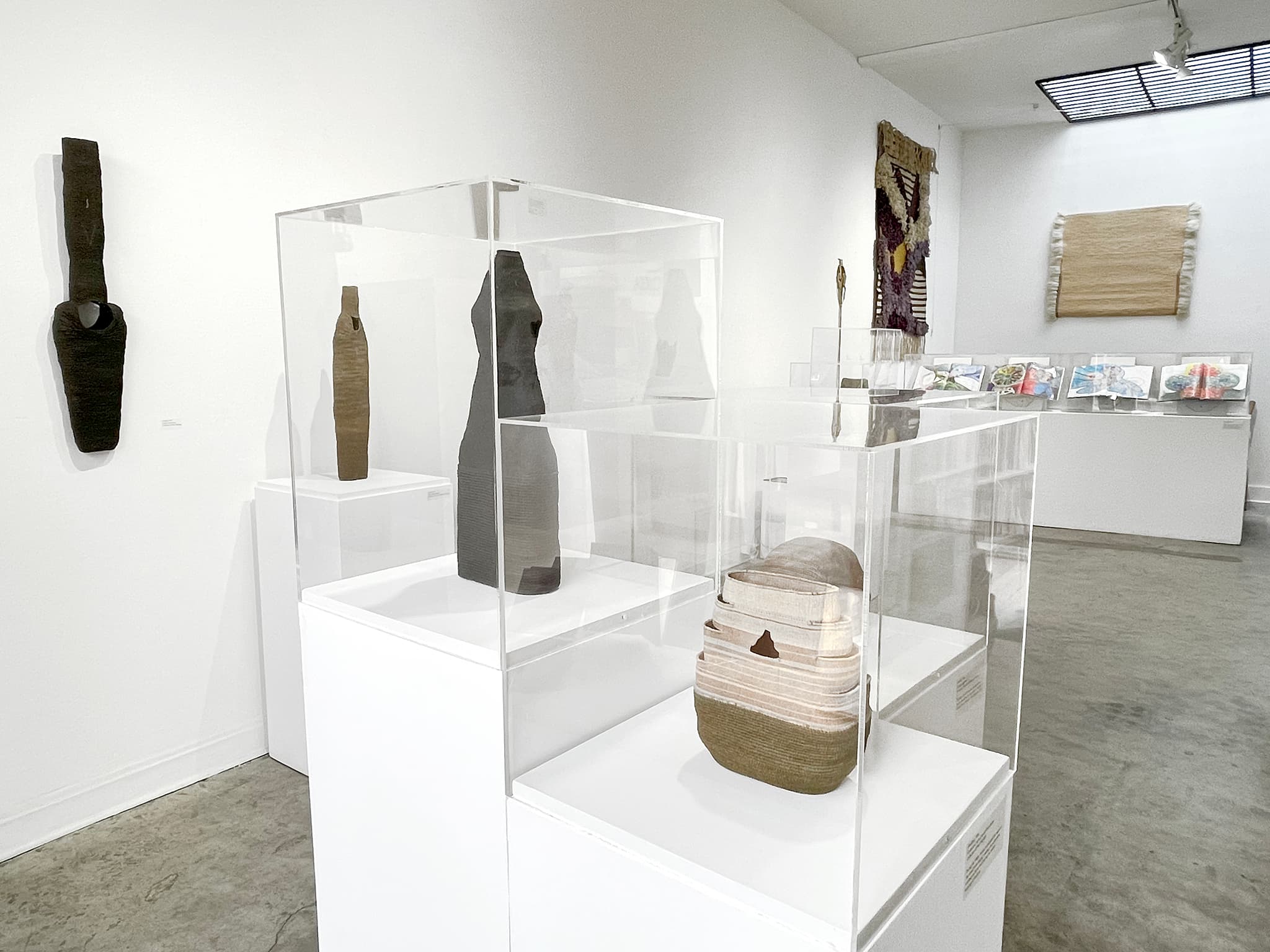
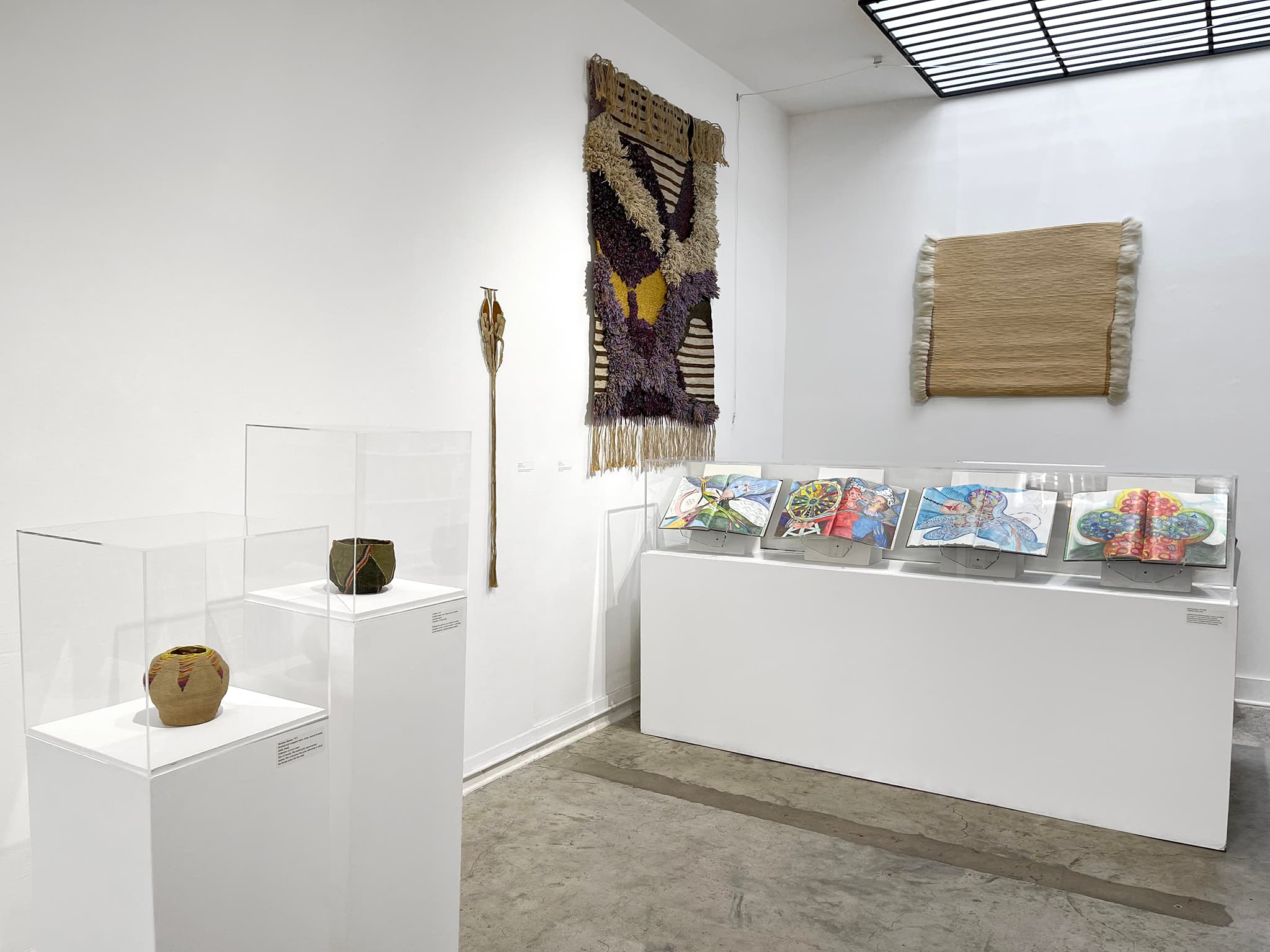
Artist Bio
Ferne Jacobs, who moved to Los Angeles at an early age, has devoted herself to fiber art since the mid-60s when she took a weaving workshop with the artist Arline Fisch. She received her M.F.A. from Claremont Graduate University in 1976 and has been featured in solo and group exhibitions throughout the United States and abroad. She was awarded the National Endowment for the Arts Fellowships in 1973–74 and 1977–78. Jacobs is the recipient of the Flintridge Foundation Award for Visual Artists, and in 1995 she was named a Fellow of the College of Fellows by the American Craft Council. Jacobs’s work can be found in numerous public collections, including the Smithsonian National Museum of American Art (Washington D.C.), the Metropolitan Museum of Art (New York City), the Museum of Arts and Design (New York City), the Museum of Fine Arts (Boston), the de Young Museum (San Francisco), and the Rhode Island School of Design (Providence).

